El Garmin Forerunner 735XT es el último exponente de Garmin para la gama multi deporte; es decir para triatlón, duatlón, acuatlón y otras actividades acabadas en «lón». En definitiva, un reloj que permite grabar una actividad compuesta de varios deportes separados (por ejemplo, natación y carrera).
Tras varias semanas de uso con la unidad facilitada por Garmin ya estoy en condiciones de poder decirte qué es lo mejor y lo peor de esta nueva versión de la gama Forerunner. Una vez terminada la prueba, lo enviaré de vuelta. No hay ningún tipo de compensación por parte de las marcas para las pruebas que realizo, por tanto está en tus manos el poder ayudar a mantener la página. ¿Cómo? Si te gusta la prueba y te ayuda a decidir tu compra, hazlo a través de los enlaces que facilito. De esta forma yo recibiré una pequeña comisión por cada compra (ya sea del 735XT o de cualquier otro artículo que necesites), sin ningún coste extra por tu parte.
Y ahora que ya está todo aclarado, es momento de comenzar a hablar del 735XT.
Navegar a secciones específicas
- VALORACIÓN
- Garmin Forerunner 735XT
- Correr con el 735XT
- Bici
- Natación
- Triatlón y multideporte
- Navegación
- Sensor de pulso óptico
- Monitor de actividad
- Autonomía
- Funcionamiento del GPS
- Altímetro (o ausencia de él)
- Funciones de conectividad
- Errores y fallos
- Comprar Garmin Forerunner 735XT
- Opinión Garmin Forerunner 735XT
- VALORACIÓN
VALORACIÓN
Funcionamiento - 9.5
Conectividad - 9.5
Diseño, acabado y comodidad - 8.5
Autonomía - 8
Aplicaciones - 9
Precio - 7.5
Lo mejor
- Pequeño y ligero
- Compatible con multitud de sensores, incluyendo luces y medidores de potencia
- Cálculo de FTP (con medidor de potencia)
- Muy configurable
- Buen rendimiento en natación en aguas abiertas
Necesita mejorar
- Sin altímetro
https://www.amazon.es/dp/]B01DWIY3TK&tag=c1mes-21
https://www.amazon.es/dp/B01DWIY39A&tag=c1mes-21
Garmin Forerunner 735XT
La presentación del Garmin Forerunner 735XT cambia un poco con respecto a la de sus hermanos Forerunner (230, 235 y 630). En lugar de tener el reloj visible detrás de una tapa de plástico, tiene una tapa de cartón con bastante más presencia.
Dependiendo del pack que compres (con o sin sensor o sensores de pulso), el tamaño de la caja será uno u otro. En este caso concreto, Garmin me ha enviado el Forerunner 735XT con pack Tri. Es decir, incluye los sensores Garmin HRM-Tri y Garmin HRM-Swim. Hay otras dos opciones más, el pack Run con un sensor HRM-Run2 o comprar el reloj sin sensores de ningún tipo, usando sólo el sensor de pulso óptico integrado o los sensores que ya tengas de modelos anteriores.
Comparando la caja con la del Garmin Forerunner 230 (a su derecha) puedes comprobar que es bastante más voluminosa.
Una vez retirada la parte frontal de la caja encontramos un diseño similar al del resto de la gama Forerunner. Garmin le da un toque premium al 735XT añadiendo ese extra de caja de cartón frontal.
Pero vamos al contenido. Como se trata del pack Tri, se incluyen los dos sensores comentados anteriormente. Y junto a los sensores sus correspondientes extensores, que según sea el caso deberás usar uno u otro (más información acerca de esto en la prueba de HRM-Tri y HRM-Swim).
En cuanto al reloj, estéticamente ya es un viejo conocido. Y es que comparte caja (no la caja de empaquetado, sino la propia forma del reloj) con los 230, 235 y 630. Aunque la pantalla parece ligeramente de mayor tamaño, es más un efecto óptico de un marco ligeramente más estrecho. A la hora de la verdad el diámetro visible es el mismo (31,1mm) y la resolución es también idéntica, con 215×180 pixeles. Es una pequeña mejora con respecto al Foreunner 920XT, que cuenta con una resolución ligeramente menor (205×148 pixeles).
No se conservan botones en la parte superior del reloj, que tan cómodos son en la bici. En su lugar disponemos de cinco botones, tres en el lado izquierdo y dos en el derecho. Las funciones son las habituales en cada uno de ellos, para encender/apagar el reloj o la iluminación o para desplazarse por los menús o diferentes pantallas.
Como siempre, el botón de iniciar o detener la actividad es de mayor tamaño y diferente color, para destacar como botón principal. Y seguimos disponiendo de botón para poder marcar las vueltas de forma manual.
Es decir, el funcionamiento habitual de Garmin.
El material es plástico, tanto en la caja como en la pantalla. Hace que el reloj sea muy ligero (sólo 44 gramos), pero bien es cierto que le da un aspecto de reloj barato, bastante en contraste cuando se compara con otros relojes similares, tanto en precio como público objetivo (Ambit3, V800, Fenix 3…). Bien es cierto que el 920XT también presentaba ese «problema», así que no es algo que resulte destacable.
En la parte trasera encuentras el sensor de pulso óptico Garmin Elevate. Desde que se introdujo hace unos meses en la pulsera Garmin Vivosmart HR ha ido llegando al resto de la gama. Y terminará convirtiéndose en una función básica de cualquier modelo de Garmin, pues no en vano a día de hoy está presente de una forma u otra en casi toda la gama de relojes deportivos.
El cable de sincronización y carga es similar al del resto de la gama Forerunner (230/235 y 630). No podía ser de otra manera si la caja tiene el mismo diseño.
Aunque lo cierto es que el cable ya ha quedado relegado a ser usado exclusivamente para cargar el reloj, pocos quedan que no hagan las sincronizaciones de forma inalámbrica a través del teléfono móvil. Eso sí, el tope de gama actual de la gama Forerunner ha perdido la conectividad WiFi, aunque creo que no es una perdida importante pues es una opción de sincronización bastante minoritaria, comparada con la sincronización a través de Bluetooth Smart.
Como ves, la colocación del clip de carga es similar a los otros modelos.
Fácil de colocar y mantiene la conexión correctamente, aunque no es tan bueno como el del Fenix 3 que deja el reloj anclado en las cuatro esquinas. Pero mejor colocamos el reloj en su sitio y nos empezamos a mover un poco con él.
Correr con el 735XT
De todo lo que ofrece el Garmin Forerunner 735XT, la parte de carrera es la que menos sorpresas contiene. De hecho no hay ninguna, y es que el 735XT ofrece en el perfil de carrera lo mismo que el 630. Así que los que estabais suspirando por un Forerunner 630 con sensor de pulso óptico aquí lo tenéis (sin la pantalla táctil, que al final nadie quiere), junto con más modos deportivos.
Al igual que en el 630, es posible mostrar hasta 4 datos por pantalla. Y dispones de 4 pantallas en las que puedes configurar la información como prefieras.
Junto a esas pantallas puedes activar otras pantallas independientes: indicador de zona de frecuencia cardíaca, mapa, virtual partner, dos pantallas diferentes de dinámica de carrera y otra pantalla con la hora. Aquí puedes ver esas pantallas (salvo la de la hora, porque eso ya sabes cómo es).
La mayoría de las pantallas adicionales admiten realizar ajustes. Como seleccionar la métrica principal en cada pantalla de dinámica de carrera, el ritmo objetivo de virtual partner o la orientación del mapa.
Y ahora que estamos con la dinámica de carrera, recordarte que para disponer de estos datos es necesario que lleves el sensor de pulso en el pecho. Aunque el Forerunner 735XT tenga el pulsómetro integrado, los datos avanzados de la dinámica provienen de los acelerómetros que tienen los sensores HRM-Run (en cualquiera de sus dos versiones) o HRM-Tri. Así que si compras el reloj sin ningún sensor asociado, no dispondrás de estos datos.
Sí tendrás datos de cadencia, pero no del resto de métricas: oscilación vertical, tiempo de contacto con el suelo, longitud de zancada, ratio de oscilación vertical y balance de contacto con el suelo.
En caso de llevar el sensor, podrás obtener gráficas como estas tras sincronizar tu entrenamiento.
¿Qué puedes hacer con cada uno de esos datos? Puedes ver el artículo sobre cómo interpretar los datos de Garmin Connect en el que hablo al respecto.
Hay otra serie de configuraciones posibles en el perfil de actividad, tanto en el de carrera como del resto de perfiles deportivos de los que hablaré más adelante. Es decir, cada perfil deportivo tiene su configuración específica y cada cambio que hagas en él sólo afectará a dicho perfil.
Por tanto, gracias a que el 735XT permite añadir perfiles deportivos nuevos (no sólo los que trae el reloj de serie como en los 230/235), podrías tener un perfil de entrenamiento de carrera y otro diferente para competir, con configuraciones específicas de pantallas de datos y de alertas u otras opciones.
El resto de opciones habituales no varía. Alertas, vueltas manuales o automáticas (distancia editable) pausa y cambio de pantalla automática, GPS con GLONASS activado, etc. Y al igual que en los modelos de gama más alta, la opción de metrónomo para los ejercicios de cadencia.
No quiero ser repetitivo, pero lo indico de nuevo. Las prestaciones en cuanto a información adicional son iguales que las que están presentes en el Forerunner 630. En primer lugar, y como una de las incorporaciones más novedosas (de hecho se lanzó con el 630) el cálculo del umbral de lactato. El reloj te permite calcular a través de una prueba guiada (o dejarlo en modo automático para que a medida que vayas acumulando entrenamientos de diferente índole pueda hacer el cálculo) cuál es tu umbral de lactato. Es decir, a partir de qué ritmo de velocidad y pulsaciones estima el reloj que empiezas a acumular fatiga.
Una vez completada la prueba o, como digo, de forma automática, tendrás la estimación de dónde se sitúa tu umbral de lactato, o el punto de corte entre el entrenamiento aeróbico y anaeróbico.
Una vez obtenidos los datos, el reloj te permite actualizar tus zonas de frecuencia cardíaca de forma automática a partir de esos nuevos valores.
Para hacer la prueba (o para obtener datos de forma automática en los sucesivos entrenamientos) es necesario que tengas emparejado un sensor de pulso. No es posible hacer el cálculo sólo con los datos del sensor óptico, ya que el algoritmo precisa de datos de variabilidad de pulso, algo que los sensores ópticos no pueden facilitar.
Recuerda, es un algoritmo en el que se compara tus datos con una enorme base de datos de otros atletas. El resultado que da no será 100% cierto, pero en muchas ocasiones sí se acerca bastante a un dato certero. Si por ejemplo indica que tu umbral está en 167 pulsaciones puede que no sea ese exactamente, pero dudo que haya más de 5 pulsaciones de diferencia con el dato real.
Seguimos teniendo disponible la opción de estimación de VO2Max (para lo cuál, a diferencia del umbral de lactato, no es necesario el sensor externo) que te permite llevar un registro de tu estado de forma. Aunque no habrá cambios significativos (una vez alcanzado un registro éste se mantiene bastante estable, pues el volumen máximo de oxígeno es algo bastante influenciado por la propia genética de cada uno), sí puedes percibir diferencias de algún punto, sobre todo cuando hay cambios en la carga de entrenamiento, al pasar de final de temporada a pretemporada y a picos para carreras en particular.
Al comenzar a usarlo el valor será bastante variable, porque tiene que ir conociéndote. Irá subiendo poco a poco (de hecho, en otros relojes tengo un valor de 54) y una vez alcanzado tu punto de valor de consumo máximo de oxígeno, se mantendrá bastante invariable salvo que haya cambios importantes en tu entrenamiento.
Este registro de VO2Max también aporta otro dato, de nuevo en comparación con una base de datos de diferentes atletas, en el que te facilita un pronóstico de tiempos posibles para diferentes distancias.
No hay que tomárselo al pie de la letra ni contar con esos tiempos para todas las distancias; sobre todo si no la estás entrenando. Ahora mismo no estoy haciendo una preparación que me permita afrontar una maratón, como para pretender hacerlo en poco más de 3 horas…
Por último, el reloj llevará un control de recuperación. Dependiendo de la dureza de cada entrenamiento recomendará un tiempo de recuperación. No quiere decir que no puedas entrenar hasta que ese temporizador llegue a cero, sino que no es aconsejable que vuelvas a hacer un entrenamiento de alta intensidad. Es decir, que si haces un entrenamiento de series y te da 48 horas de tiempo de recuperación, lo conveniente es que no vuelvas a hacer un entrenamiento de intensidad similar hasta dentro de dos días (algo que ya sabías, otra cosa es que le hagas caso).
También, cuando comienzas un entrenamiento, tendrás un mensaje después de los primeros minutos del mismo en el que se mostrará una escala con tu estado de recuperación (de momento te dejo foto del 630 hasta que me acuerde de hacérsela al 735XT 🙂 ).
En mi caso las sensaciones percibidas al hacer el entrenamiento coincide bastante con el dato de la gráfica. Si veo un -5 sé que va a ser un día duro, porque me va a costar trabajo hacer lo que tengo en el plan de entrenamiento. En cambio, ver un +8 en la pantalla no hace otra cosa más que confirmar que, efectivamente, voy a volar en las series que están programadas ese día.
A la hora de entrenar, seguimos disponiendo de los entrenamientos avanzados. No es nada nuevo, pues lleva ya en la gama Forerunner desde hace unos cuantos años (incluso en las gamas medias). Podrás crear un entrenamiento con los diferentes pasos que debes realizar y sincronizarlos al reloj para, cuando vayas a entrenar, te vaya recordando cuál es el castigo del entrenador para ese día y si estás cumpliendo el objetivo marcado.
Pero no es la única forma que ofrece para entrenar. Puedes configurar sesiones de intervalos de forma rápida (aunque sin marcar objetivos de ritmo o de frecuencia cardíaca, sólo de periodos de intervalo), establecer un objetivo de distancia, distancia y tiempo o distancia y ritmo (en esencia, un virtual partner) o competir contra una actividad ya realizada, con el fin de intentar mejorar el tiempo de la misma.
Bici
¿Qué hay del ciclismo? Pues podría repetir casi punto por punto lo que acabas de leer en el apartado anterior. Y es que el comportamiento del perfil de ciclismo es muy similar al de carrera. La principal variación es que en lugar de registrar ritmo, lo harás en velocidad (normalmente en km/h, salvo que prefieras las millas). El resto de configuraciones de pantallas de datos, alertas, configuración de GPS y demás es idéntica.
Donde hay variación es a la hora de los sensores que podemos conectar (o usar). Si en carrera sólo podremos usar un sensor de pulso externo, footpod y algún que otro accesorio externo (de momento Garmin sigue sin dar soporte a los medidores de potencia en carrera), las opciones en ciclismo se multiplican. Podrás tener el reloj emparejado con multitud de sensores, tanto de diferentes métricas como de la gama de ciclismo Varia. En resumen, estos son los sensores de los que podrás recibir información en el reloj:
- Sensor de frecuencia cardíaca externo
- Sensor de velocidad y/o cadencia
- Medidor de potencia
- Luces ANT+ (como las que ofrece Bontrager)
- Luces Garmin Varia
- Radar Garmin Varia
- Pantalla externa Varia Vision (que también se puede usar en carrera, aunque no lo recomiendo)
- Cambio electrónico Shimano Di2 (y probablemente SRAM Red eTAP en un futuro, al igual que las unidades Edge 520 y Edge 1000)
- Sensor de temperatura externa Garmin Tempe (por supuesto, también es posible usarlo en carrera u otro perfil)
- Control de cámara de acción Garmin Virb (de nuevo, perfectamente controlable en cualquier otro perfil deportivo)
Todos estos accesorios se conectarán a través de ANT+, de forma exclusiva. Aunque el reloj disponga de conectividad Bluetooth sólo podrás usarla para conectar con tu smartphone, pero no con medidores de potencia Bluetooth o con sensores de pulso Bluetooth. Así que si tienes un sensor de Polar, no podrás usarlo con el Forerunner 735XT (ni con ningún otro Garmin).
Actualmente hay algún problema con respecto al uso de algunos sensores. Es algo que no me ha ocurrido jamás con ningún otro reloj, por lo que se debe tratar de un mero fallo del firmware que Garmin tendrá que solucionar en la siguiente actualización. Y es que en ocasiones el reloj no se conecta con los sensores de forma automática, y hay que entrar en el menú de opciones para hacer la conexión de forma manual.
En un entrenamiento esto puede suponer un pequeño quebradero de cabeza ya que tienes que perder un minuto de tu vida en hacer algo que el reloj debería hacer de forma totalmente automática. Pero en carrera es crucial.
Y es que llegar de nadar para montarte en la bici y darte cuenta que no tienes datos de potencia puede ser crucial, sobre todo si estás luchando por posiciones. Porque tendrás dos opciones: perder unos segundos para conectar manualmente el sensor o tener que competir sin datos de potencia (o cadencia o lo que sea). Y no ocurre sólo con la potencia.
También con el resto de sensores, como Varia Radar. Y hablando del radar, el Forerunner 735XT es el primer reloj de Garmin en ser compatible (el primero en anunciar la compatibilidad fue el Vivoactive HR, pero llegó al mercado sin incluir la opción, recibiéndola más tarde a través de actualización de software).
Si emparejas el sensor con el radar Varia tendrás datos del tráfico que se acerca por detrás, al igual que en los Edge. El reloj emite un pitido y vibra para alertarte de que hay vehículos que se aproximan a tu posición. En la pantalla aparecerá también un punto por cada uno de estos vehículos que se aproxima, y el color en el que se representa la barra lateral indicará la velocidad a la que se aproxima, habitualmente en color naranja y pasando a rojo si la diferencia de velocidad es muy elevada.
Pasando a verde cuando ya no hay más coches aproximándose y se ha quedado la carretera totalmente libre para nosotros solos.
Esa franja verde desaparece después de notificarte que ya estás a salvo, quedando exclusivamente el icono de la parte superior indicando que estás conectado a una unidad de luces.
Por último, si en carrera tienes disponible el cálculo del umbral de lactato, en ciclismo será la potencia de umbral funcional (conocido comúnmente como FTP), que es una de las principales novedades en cuanto a métricas del 735XT.
De la misma manera, podrás obtener el cálculo automático con los diversos entrenamientos que vayas realizando o realizando una prueba guiada. Eso sí, tanto para la prueba guiada como para el reconocimiento automático es necesario que el reloj esté emparejado tanto con un medidor de potencia como con un sensor de pulso externo (no es suficiente con el sensor de pulso óptico, ya que igual que el umbral de lactato precisa de datos de variabilidad de pulso).
Como ves, el 735XT es un dispositivo que hace las veces de ciclocomputador de una forma casi idéntica a una unidad Edge. Garmin ha hecho un fantástico trabajo y sigue dotando de nuevas funciones a su reloj de triatlón facilitántote más los entrenamientos. Pero encuentro dos problemas de importancia.
En primer lugar es la ausencia de altímetro barométrico; sin ir más lejos algo disponible en el 920XT que pretende sustituir o en el Fenix 3. Inexplicablemente el 735XT no lo tiene, pero para tratar de eso hay una sección específica. En segundo lugar es la ausencia, de momento, de un kit de montaje rápido.
Tanto el 920XT como el Fenix 3 lo tienen (siempre que no sea el Fenix 3 HR). Este accesorio permite pasar rápidamente el reloj de la correa en la muñeca al manillar de la bicicleta (y viceversa), con un simple giro de cuarto de vuelta. Es tremendamente útil en una competición de triatlón donde quieres poder ver los datos sin tener que girar la muñeca para ver el reloj (sobre todo si estás acoplado en el manillar). Garmin de momento no ofrece este accesorio para el 735XT, y tampoco está claro si piensa ofrecerlo en un futuro próximo.
Natación
En el Garmin 735XT, como en muchos otros relojes multideporte (o de duatlón-triatlón) tenemos disponible dos modos de natación: en piscina o en aguas abiertas. En el primer caso hará uso del acelerómetro interno para contar largos (y por tanto distancia) y en el segundo caso es el GPS el que realizará la medición de la distancia. Empezaré por el primero.
Natación en piscina
Antes de empezar a hablar de brazadas y largos, recordarte que el 735XT es compatible con los sensores específicos para natación HRM-Tri y HRM-Swim. Si no los conoces, te recomiendo que eches un vistazo a la prueba de ambos, pues cuando vayas a comprar el reloj es importante que sepas en qué pack estás interesado.
Una vez que ya está dejado el tema de los sensores de lado (es algo bastante largo de tratar y por suerte ya está todo totalmente detallado en su prueba específica), empezaré por la natación en piscina.
El modo de funcionamiento es muy sencillo. El acelerómetro interno del reloj (el mismo que sirve para contar pasos en el monitor de actividad o la cadencia mientras corres) es capaz de contar el número de brazadas. Y no sólo eso, también puede identificar cuándo has llegado al final de la calle y realizas el viraje para encarar otro largo.
Por tanto es capaz de acumular distancia con una precisión bastante elevada. Siempre se le puede escapar algún largo, pero normalmente es más por nuestra culpa al hacer movimientos extraños con el brazo que a un problema con el reloj. Pero además también permite contabilizar el número de brazadas necesarias por cada largo (a menor número de brazadas, mejor deslizas) y por tanto el valor del SWOLF.
La primera vez que accedes al perfil de natación te preguntará por el tamaño de la piscina. Puedes seleccionar entre las diferentes medidas de piscina estándar (25 metros, 50 metros, etc.) o bien introducir una medida personalizada, a partir de 17 metros. Si en algún momento cambias de piscina y vas a nadar en una diferente de mayor o menor tamaño, deberás entrar en la configuración del perfil de actividad y realizar la modificación pertinente.
En el perfil de natación las pantallas de datos que podemos configurar son muy diferentes a las de carrera o ciclismo. Evidentemente el deporte no tiene nada que ver, por lo que habrá mucha variación. Brazadas, SWOLF, ritmo medio de intervalo o de 100m… todo eso es en lo que estaremos pendientes ahora. Tenemos el mismo número de pantallas editables (cuatro), así como la posibilidad de configurar alertas para distancia, calorías, etc. Todo es igual que en los perfiles anteriores.
Pero hay opciones diferentes. Por ejemplo puedes activar o desactivar la detección del tipo de brazada.
De esa manera cuando sincronices la actividad y la consultes en Garmin Connect podrás saber qué estabas haciendo en cada ejercicio, ya que generalmente trabajamos varios estilos en la piscina. Si sólo nadas a crol, te puedes olvidar totalmente; pero si haces varios estilos siempre es útil poder consultar todos los detalles en Connect.
También hay una pantalla que puedes activar para hacer el registro de ejercicios. Por ejemplo cuando tienes que hacer pies de crol sujetando una tabla. En ese caso no hay movimiento de brazo, por lo que el reloj no puede registrar distancias. Puedes activar el modo de registro de ejercicio de técnica y cuando termines, te preguntará la distancia que has nadado. De esa manera esos metros se añadirán también al total de la sesión (es importante sincronizar con Strava todos los metros realizados, que nadie vea que te escaqueas).
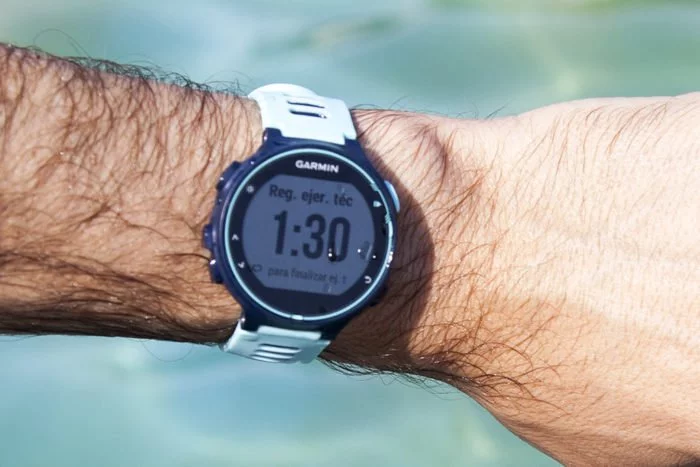
Ahora podrás preparar la sesión de entrenamiento y sincronizarla con el reloj. En la pantalla te irán apareciendo los diferentes ejercicios que debes realizar e irá pasando por todos los pasos de la misma forma que cuando tienes preparado un entrenamiento de ciclismo o carrera.
Además, tras la última versión de firmware 3.30, también se añaden iconos para reflejar el material que hay que usar en cada parte del entrenamiento.
Otra novedad que ha llegado al 735XT de forma exclusiva está en los records. Aunque no lo he especificado en las secciones anteriores, el 735XT guarda registro de los records que vas realizando para diferentes distancias u otros parámetros. Por ejemplo para carrera registrará el kilómetro más rápido, el mejor tiempo en media maratón, la carrera más larga, etc. De igual manera, en ciclismo podrás ver la mejor potencia media durante 20 minutos o recorrido más largo.
En el 735XT estos récords llegan también a la natación, quedando grabado los tiempos para los 100 metros más rápidos, los 400 metros o la distancia más larga. Estos registros son sólo para la natación en piscina (no computa en aguas abiertas, así que si haces 2.500m en el mar pero tus sesiones de piscina suelen ser de 1.800m, el récord que figurará en el reloj serán los 1.800m). Todos estos registros se sincronizarán con Garmin Connect y podrás verlos en la pestaña de «Registros Personales», aunque a día de hoy todavía no muestra los de natación.
Y como es normal, tras terminar el entrenamiento y sincronizarlo, podrás acceder a todos los detalles
Pero si quieres conocer todos los detalles, te recomiendo que le eches un vistazo al artículo correspondiente de análisis de datos de Garmin Connect.
Natación en aguas abiertas
Por natación en aguas abiertas se entiende todo ejercicio de natación fuera de una piscina de una medida determinada. Aquí la distancia y los ritmos no los determina el acelerómetro interno del reloj, sino que lo hace a través del GPS (aunque el acelerómetro seguirá facilitando información de brazadas por minuto y SWOLF).
Sin lugar a dudas la tarea más difícil que se le puede presentar a un reloj GPS es la de la natación en aguas abiertas. El motivo es sencillo, cada vez que el reloj entra en el agua (con cada brazada) se pierde la señal de GPS, y la vuelve a recuperar (o ha de intentarlo) en el corto espacio de tiempo que el brazo se encuentra fuera del agua.
A partir de esos datos, el reloj tiene que unir una serie de puntos de localización y tratar de interpretar la ruta que has seguido. A partir de esa ruta podrá darte información de la distancia recorrida y evidentemente de tu ritmo de natación.
El resultado obtenido con el 735XT ha sido realmente bueno en todas las pruebas que he realizado. Tanto por la ruta seguida como por el cálculo de distancias. Por ejemplo este entrenamiento, siguiendo la línea de boyas paralelas a la costa, coincidiendo tanto a la ida como a la vuelta.
Para ponerlo a prueba llevaba un total de cuatro relojes para medir la ruta. En ambos brazos relojes capaces de realizar actividades de natación en aguas abiertas: Garmin Fenix 3, Suunto Ambit3 Sport y el propio Garmin Forerunner 735XT. Y como juez de todos ellos un Garmin Forerunner 230 debajo del gorro de natación que, en dicha posición, se mantiene siempre fuera del agua y por tanto será el que marque de forma correcta la ruta seguida.
Estas son las distancias registradas por cada uno de ellos para este entrenamiento:
- Garmin Forerunner 230 (que es el marca la distancia «real»): 1.560 metros
- Garmin Forerunner 735XT: 1.660 metros
- Garmin Fenix 3: 1.602 metros
- Suunto Ambit3 Sport: 1.817 metros
Y a continuación una comparativa de los cuatro tracks grabados. Se puede comprobar que aquí el más perdido es el Ambit3 pues va algo más mareado, mientras que los otros tres clavan bastante bien los trazados.
En cuanto a la frecuencia cardíaca, debes recordar que el Garmin 735XT no permite usar su sensor de pulso óptico cuando se realiza una actividad acuática. El motivo es que a día de hoy ningún sensor óptico es capaz de registrar el pulso de forma precisa debajo del agua. He probado varios sensores (tanto integrados en relojes como externos) y en ocasiones obtenía buenos resultados, pero en otros momentos era un completo desastre.
En el 735XT podremos usar los sensores HRM-Swim o HRM-Tri para obtener los datos de frecuencia cardíaca y poder hacer el análisis posterior tras sincronizar el entrenamiento.
Puedes encontrar todos los detalles de esos sensores en la prueba específica que tienen dedicada.
Triatlón y multideporte
Sin ninguna duda, lo que sitúa al 735XT como un reloj especial es la posibilidad de encadenar varios deportes de forma consecutiva, principalmente los tres que te he detallado hasta este momento.
Es decir, poder grabar cada segmento de un triatlón de forma independiente, cada uno en su perfil de aplicación, y presentar una actividad completa en la que incluso podemos incluir los tiempos de transición.
Porque hay muchos relojes capaces de grabar actividades de natación, ciclismo y carrera a pie (incluso dentro de la propia marca, como los Vivoactive). Pero carecen de la posibilidad de concatenar esas actividades. Y no sólo para triatlón, sino para cualquier competición en la que se vean envueltas más de dos disciplinas: acuatlón, duatlón, etc. Y por supuesto, también entrenamientos en bloque que quieras grabar de forma combinada.
Una vez que ya tienes configurados todos los deportes individuales (es decir, si vas a configurar una actividad de triatlón: natación en aguas abiertas, ciclismo y carrera), puedes crear una nueva aplicación multideporte. Para ello simplemente debes dirigirte a Configuración y Perfiles de la actividad.
Y añades una nueva actividad, en el que seleccionas la opción de Multideporte
Introduces el nombre de los que te sugiere (triatlón, duatlón o bloque), o lo personalizas con el nombre que tu quieras. Y ya es cuestión de que vayas eligiendo los deportes de los que se compondrá la actividad multideporte. Estos perfiles de actividad que estás seleccionando son los que ya has creado y configurado anteriormente, por lo que si quieres tener un perfil específico de carrera con pantallas de datos diferentes a los que usas cuando entrenas, debes tener creado ese perfil con anterioridad.
También puedes optar por incluir transiciones o no. Las transiciones serán una actividad intermedia que se separa del resto y queda registrada de forma independiente. Para pasar de una a otra actividad lo harás presionando el botón de marcar vuelta. Así, cuando sales del agua, simplemente pulsarás el botón para iniciar la T1.
Tras quitarte el neopreno, ponerte el casco y demás; podrás volver a pulsar el botón de vuelta antes de montar en la bici y pasarás a continuación a la siguiente actividad que tengas programada (en el caso de un triatlón, ciclismo). El reloj terminará de contabilizar el tiempo de T1 y comenzará a contar el del segmento de ciclismo. Y así hasta terminar la prueba, en la que tras la última pulsación del botón de vuelta se terminará la actividad.
Dentro de las pantallas de datos podrás tener el tiempo de la actividad en curso (por ejemplo carrera a pie) o el tiempo total de la prueba, según lo que prefieras en cada momento.
A la hora de sincronizar la actividad, en Garmin Connect podrás acceder a la actividad completa, y en la parte superior dispones de varias pestañas para cambiar entre los diferentes deportes. Por ejemplo este entrenamiento en bloque.
La primera pantalla incluye ambas actividades con los detalles básicos de ellas, pero puedes pasar de una a otra en la pestaña superior y consultar cada uno de los deportes de forma individual.
Y lo mismo si lo que haces es un triatlón.
Si has configurado la sincronización automática de actividades con otras plataformas (Strava, Training Peaks, etc), Connect enviará cada una de las partes del entrenamiento de forma independiente, incluyendo las transiciones. Así que si tienes un triatlón en Connect en una sola actividad, a Strava llegan cinco actividades (los tres segmentos más las dos transiciones). Sólo Garmin Connect realiza esta agrupación.
Lo único que debes tener en cuenta a la hora de hacer entrenamientos de este tipo es que, ya que el botón de marcar vuelta es el que se usa para cambiar entre actividades, no podrás usarlo para separar vueltas ni partes del entrenamiento.
Pero hay otra opción a la hora de realizar entrenamientos de forma consecutiva. Si durante una actividad mantienes presionado el botón de desplazarte hacia abajo, accederás al menú de actividades. Puedes cambiar a cualquier otra y continuar grabando la misma actividad inicial (es decir, todo en el mismo archivo). De esta manera puedes hacer uso del botón de marcar vuelta en cualquier parte del entrenamiento, pero no guardarás el tiempo de transiciones.
El Garmin 735XT no está pensado para ser un dispositivo de ayuda en la navegación. Muchas de las prestaciones que podemos encontrar en los Fenix 3 no están presentes en el 735XT. No podemos desplazarnos por el mapa a izquierda o derecha para consultar otras zonas de la ruta.
Pero sí hay un aspecto de la navegación que mejora al Fenix 3, y es que si se crea una ruta desde Garmin Connect y se envía al reloj, incluirá puntos de referencia en el recorrido. Esto permite tener navegación con aviso de giro anticipado; un aviso que no sólo aparece en pantalla para indicarnos la distancia que tenemos hasta llegar a un próximo giro, sino también emitiendo un tono de aviso (y vibración) cuando estamos a punto de llegar a dicho punto.
Estas indicaciones están pensadas principalmente para cuando usamos el reloj para ciclismo, ya que te avisará con antelación de que tienes que tomar un desvío. No es una navegación punto a punto como la que puede ofrecer un ciclocomputador Edge 1000 (que incluye mapas), en el que marcas que quieres dirigirte al McDonald’s más próximo para continuar con tu dieta y traza la ruta de forma automática; pero sí va más allá de la típica ruta de seguir puntos en la ruta.
Podrás hacer zoom en el mapa para acercarte o alejarte.
Para acceder al menú simplemente tienes que mantener pulsada la tecla de desplazamiento superior mientras estás en la pantalla de mapa.
Además de las propias indicaciones, se añadirán también otras pantallas de información referente a la ruta, como un virtual partner (tienes que indicar el ritmo o velocidad estimado a la hora de crear la ruta) o la distancia y tiempo restante.
El menú de navegación incluye un par de posibilidades más. En primer lugar tienes una opción que facilita los datos de posicionamiento de un punto determinado. Puedes guardar ese lugar para volver más tarde (por ejemplo, donde hayas aparcado el coche).
Eso sí, la ruta será sencilla con una flecha que te indicará la dirección que deberás tomar, no habrá indicaciones de giro pues lógicamente no es un trayecto guardado.
En segundo lugar tienes la opción de volver a inicio. Puedes activar la vista de mapa en el reloj sin trayecto ninguno y verás que va guardando por dónde te estás desplazando. Si activas la opción de volver a inicio el reloj mostrará la indicación de dirección con la flecha, así como el mapa para desandar la ruta (si es que activas la pantalla de mapa). Volverás por el mismo camino, no por el posible camino más corto (porque repito, el reloj no tiene ningún tipo de cartografía).
Esa opción la puedes encontrar tanto en el menú principal como dentro del menú de actividad (que es donde más la puedes necesitar). Para activarla simplemente tienes que mantener presionado el botón de desplazarse hacia arriba para acceder a ese menú donde vas a encontrar las diferentes opciones.
Sensor de pulso óptico
A pesar de que el sensor Garmin Elevate del 735XT ya es un viejo conocido, en cada nuevo reloj que lo incluye me gusta volver a repetir las comparativas de gráficas de pulso. El hardware físico es el mismo y no hay variaciones en ese aspecto, pero el algoritmo sí se va puliendo con cada versión. Tanto en los nuevos relojes como en los anteriores, a través de actualizaciones de firmware.
Recuerdo que el principal problema presente en el sensor era con las actividades con intervalos y el retraso que sufría a la hora de recuperar el pulso, demorándose siempre algo más de tiempo comparado con otros sensores (tanto ópticos como en el pecho). He visto bastantes mejoras en ese aspecto.
El segundo punto donde le cuesta es a la hora de montar en bici, ya que el funcionamiento del algoritmo debe ser diferente al no realizarse los mismos movimientos, así como por la posición forzada de la muñeca, que puede facilitar la entrada de luz en la zona del sensor. Y aquí… pues todo sigue prácticamente igual.
Resumiendo, en carrera ha mejorado su comportamiento sensiblemente, lo cual no quiere decir que sea perfecto. Sigue teniendo sus problemas aquí y allá.
A continuación te facilito varias pruebas comparativas en las que enfrento el sensor Garmin Elevate del 735XT con otros sensores, tanto óptico (Scosche RHYTHM+) como el Smart Sensor de Suunto o el HRM-Tri de Garmin. Como es evidente, estas pruebas las realizo en función a mis características de piel, vello, etc.
Ten en cuenta que de un usuario a otro puede haber diferencias, aunque lo más importante es cómo se lleva en la muñeca. Firme (sin estrangular) y dejando un espacio aproximado de un dedo entre el hueso de la muñeca y donde se coloca el reloj.
Esto lo especifico porque luego en los comentarios se me acusa de mentir o de poner gráficas perfectas, y cuando alguien lo compra y lo prueba tiene otros resultados (por su piel o por no colocarlo bien). Repito, es mi experiencia en mi cuerpo y sabiendo cómo se debe colocar el reloj en la muñeca.
Como he dicho, he visto mejoras en el sensor, pero eso no quiere decir que el sensor no tenga sus problemas, como en este entrenamiento que debería ser bastante sencillo (ritmo constante) y sin embargo el Forerunner 735XT se perdió totalmente poco más allá de los 10 minutos, a pesar de empezar perfectamente y de no ser un entrenamiento especialmente complicado.
Si tengo que apostar por algo, diría que es un problema de ajuste de la correa y la acumulación de sudor. Tal vez debiera haber llevado un punto más de apriete, para impedir la acumulación de sudor bajo el sensor.
En el siguiente entrenamiento vuelve a ocurrir algo similar. El inicio es bueno, incluso en el primer pico de esfuerzo. Tocaba hacer rodaje con 5 intervalos de 30 segundos a ritmo sub 3:30. En el primero de ellos todo aparece bastante bien, incluso sin el habitual retraso en la recuperación de pulso del sensor Garmin Elevate.
El segundo pico tiene un ligero retraso, pero en el tramo del tercer al cuarto intervalo podemos apreciar otro problema habitual de los sensores de pulso óptico (no sólo del de Garmin, sino de todos los sensores de este tipo).
Este problema, denominado «cadence lock» o bloqueo de cadencia, ocurre cuando el sensor confunde los movimientos propios de la carrera (es decir, nuestra cadencia) con las pulsaciones por minuto. El algoritmo lo que hace es eliminar el ruido de señal producido por la cadencia para determinar las pulsaciones por minuto; si hay algún problema a la hora de realizar el registro es cuando vienen los problemas. En esta imagen puedes ver claramente cómo el sensor se ha despistado con la cadencia en lugar de seguir leyendo la frecuencia cardíaca. Es algo que a ninguno de los otros dos sensores (tampoco el otro sensor óptico, el Scosche) le ocurre en esta ocasión, pero que también podría haberle ocurrido al otro sensor óptico.
Esta otra prueba es mucho más complicada. Sprints de 20 segundos con recuperación andando hasta el punto de inicio. Tenemos dos partes diferenciadas, primero la de carrera continua con pulso bastante estable tanto al inicio como al final del entrenamiento. Aquí tanto el sensor del 735XT como el Smart Sensor de Suunto coinciden bastante satisfactoriamente.
Pero en el tramo de los 10 sprint el Garmin se esfuerza, pero no consigue hacer una lectura correcta. Comienza bien, aunque con ligero retraso en los primeros instantes de cada intervalo. No obstante la recuperación siempre es inmediata, algo que al Garmin Elevate le costaba mucho trabajo.
Pero a medida que yo me voy fundiendo en el entrenamiento, el sensor del 735XT también. Cada vez le va costando más trabajo e incluso no es capaz de alcanzar los picos de pulsaciones a los que sí llega el Ambit3.
En cuanto al ciclismo, sigue siendo una actividad que le cuesta bastante trabajo, para qué negarlo. Hay momentos en los que el registro es correcto, y otros en los que no da una. Por ejemplo en este entrenamiento, y salvando el inicio (que siempre es más complicado para cualquier dispositivo), el registro es bastante satisfactorio. Aún así, para ciclismo preferiría contar siempre con el sensor de pulso en el pecho.
Estos errores se producen por la entrada de luz en la zona de lectura del sensor, así como por los baches de la carretera y otros movimientos típicos en la bici.
Entrenando en interior con rodillo, donde no vas a encontrar muchos baches (o eso espero…) y con menos cantidad de luz, el sensor es capaz de registrar perfectamente las pulsaciones, independientemente de la intensidad del ejercicio.
Puedes ver como salvo un sprint al final donde no se da por aludido (marcado con un círculo), en el resto de la actividad registra perfectamente junto con los otros sensores.
El sensor no pinta tan mal como parece por las pruebas que te he puesto anteriormente. Simplemente he querido señalar los momentos más complicados y donde he podido apreciar errores. Porque ponerte cualquier otra gráfica de las que tengo que casan casi a la perfección sería muy aburrido, siempre es mejor meterle algo de pimienta.
Que también las hay, por ejemplo un entrenamiento en el que además de hacer carrera, incluye 10 paradas para hacer doce saltos laterales a cada lado. ¿El resultado? Tres gráficas perfectamente alineadas de principio a fin, incluyendo las paradas a realizar los correspondientes saltos.
Puede parecer que simplemente estoy tomando datos de un sensor externo, ¿verdad? En absoluto, aquí puedes ver una zona cualquiera ampliada y comprobarás que hay ligeras diferencias entre los tres sensores.
Simplemente hay que asumir que, por el momento, el rendimiento es adecuado en según qué tipo de actividades. ¿Carrera continua o competición a ritmo constante? Sin problema, podría ir perfectamente sólo con el sensor óptico. ¿Ciclismo o entrenamientos con intervalos? Si quieres tener datos precisos de frecuencia cardíaca, debes pensar en usar un sensor de pulso en el pecho.
Monitor de actividad
Intentaré no extenderme mucho en esta sección pues básicamente encontrarás en esta opción lo mismo que en el Forerunner 235.
Puedes encontrar el monitor de actividad en uno de los widgets que hay disponibles. Simplemente presionando el botón de desplazamiento podrás llegar a su pantalla. Aquí puedes ver el número de pasos que llevas acumulados en el día junto con una barra que se irá completando a medida que vayas alcanzando tu objetivo.
Dicho objetivo se podrá configurar de forma manual (por ejemplo, 10.000 pasos), aunque me parece más interesante dejarlo como viene por defecto, permitiendo que el reloj ajuste de forma automática el objetivo en función de tu tendencia.
Pulsando el botón principal en esa pantalla puedes ver el registro de los siete días previos, pudiendo comprobar si has alcanzado el objetivo en cada uno de ellos y cuál es la tendencia que estás llevando.
El reloj muestra, junto a una barra de color rojo, avisos de inactividad. Si pasas demasiado tiempo sin andar el reloj te avisará para que te pongas en pie y camines un poco, con la intención de mantenerte activo. Para eliminar esta barra deberás caminar durante unos 200 metros.
No obstante, si quieres que no te de estos avisos, puedes desactivar la función y tirarte en el sofá sin cargo de conciencia.
Al igual que en el Forerunner 235, al tener el sensor de pulso Garmin Elevate el reloj registra pulsaciones durante todo el día. La tasa de registro es variable, si no hay movimiento tomará datos cada varios minutos, si hay más movimiento lo hará en periodos más cortos. En el reloj tienes una gráfica con tu frecuencia cardíaca durante las últimas 4 horas, junto con las pulsaciones mínimas y máximas de ese periodo. En la parte superior de la pantalla también podrás ver tu frecuencia cardíaca en reposo para ese día.
Un problema al que Garmin todavía no ha sabido dar solución es la falta de correlación entre diferentes valores. Es frecuente que la frecuencia cardíaca en reposo sea superior a la que aparece como mínima en la gráfica. Según Garmin, la frecuencia cardíaca en reposo corresponderá a la media mínima durante un periodo de tiempo más largo, no a la mínima absoluta de todo el día. Pero como el tiempo de registro es bastante largo cuando no detecta movimiento, pues el cálculo no es tan preciso como debiera ser.
Por ejemplo ahora mismo, según escribo esto mi frecuencia cardíaca en reposo es de 53 pulsaciones, mientras que la mínima para las últimas 4 horas es de 46. Esto lo único que hace es crear confusión, ya que si no se explica qué es la FCR y cómo se calcula, luego llegan las confusiones.
Y al igual que en el widget de pasos, si presionas el botón principal accederás a la gráfica con la frecuencia cardíaca en reposo de los últimos 7 días, permitiéndote ver si hay picos o tendencias extrañas que puedan indicar que estás fatigado o entrenando en exceso.
Por último, si duermes con el reloj también tendrás información de cómo ha sido tu periodo de sueño. En este caso la información es bastante más sencilla, indicando solamente cuándo has tenido periodos de sueño profundo o ligero, junto con el total de horas de descanso. Esto no aparece en el reloj, pero podrás consultar los detalles en la aplicación móvil.
Todos estos datos son también parte de Garmin Connect, y podrás consultarlos también en la aplicación web (tanto los de sueño como el resto de la actividad).
Como en la aplicación del móvil.
Autonomía
Uno de los aspectos más criticados en el Forerunner 735XT es la autonomía. Garmin anuncia para este modelo hasta 14 horas en modo GPS (GLONASS desactivado) y frecuencia cardíaca óptica. Duración más que suficiente para casi todo, salvo para larga distancia. Y es que dependiendo de tu nivel, esas 14 horas pueden ser muchas, o pueden ser pocas.
Al hacer la comparativa con respecto al 920XT lo cierto es que perdemos horas de duración. El 920XT sería capaz de aguantar un Ironman sin ningún problema, pero algunos usuarios podrían necesitar de diversos trucos para que el nuevo 735XT aguante durante toda la carrera.
Con la prueba de autonomía del 735XT tengo otro problema. A diferencia de otros modelos de Garmin que usan este mismo sensor de pulso óptico, tras unos minutos sin movimiento el reloj desactiva el sensor. Por lo tanto no puedo repetir mi procedimiento habitual de dejar el reloj en el tejado grabando una actividad y esperando que se agote la batería.
Sí, cuando lo dejo e inicio la actividad el sensor estaba activado, pero cada vez que me acercaba a revisar cómo iba el tema de la duración me encontraba con las luces del sensor apagadas. En cuanto lo cogía y había movimiento, de nuevo se encendían.
No obstante y por comparar, aquí tienes el resultado de la prueba completa. Las condiciones eran sólo GPS activado (sin GLONASS), sin conectar sensores externos y aunque el sensor de pulso óptico estaba activado, sin funcionar por los motivos previamente expuestos.
¿Los datos facilitados por Garmin son fiables? Recuerdo que el fabricante especifica lo siguiente:
- Hasta 14 horas en modo GPS con sensor óptico activado
- Hasta 24 horas en modo UltraTrac, sin activar el sensor óptico
- Hasta 11 días en modo reloj, con monitor de actividad, seguimiento de frecuencia cardíaca y notificaciones inteligentes
Pero no estoy en condiciones de confirmarlo o desmentirlo. Por muy apetecible que parezca, el hecho de hacer una actividad de más de 14 horas con el reloj no es algo que me atraiga especialmente. La experiencia con otros relojes (tanto de Garmin como de otros fabricantes), junto con los resultados de la prueba en sus condiciones específicas sí me hacen pensar que los datos facilitados de autonomía son certeros, tanto en actividad como en el uso diario, en el que he necesitado cargar el reloj cada 6 o 7 días (esos 11 días sería sin grabar ni una sola actividad).
En resumen, salvo que tengas en mente participar en pruebas de larga distancia y estimes que necesitarás más de 13 horas, con la autonomía que ofrece el 735XT será suficiente.
Funcionamiento del GPS
Una de las principales ventajas de heredar hardware que ya está presente en otras gamas es que no hay mucho trabajo que hacer a la hora de ajustar el comportamiento de chipset y antena. Los 230 y 235 no tenían ningún tipo de problema en su GPS y, evidentemente, el 735XT (con los que comparte la mayor parte de su hardware) tampoco.
Es habitual ver ciertos problemas en nuevos modelos que, generalmente, se van puliendo en sucesivas versiones de firmware. Y de esto Garmin sabe bastante, pues con algunos de sus modelos han pasado por multitud de problemas (los inicios del Fenix 3 fueron complicados en zonas de cobertura difícil). Pero el 735XT es totalmente fiable desde el principio, incluso en natación en aguas abiertas.
En los muchos entrenamientos que he realizado junto con otros dispositivos no he visto ningún tipo de problema en cuanto a recepción de GPS. Por supuesto siempre habrá alguna esquina recortada aquí o allá, aunque esto va a ocurrir siempre con cualquier dispositivo. Pero no ha habido ni un sólo momento en el que haya visto tracks extraños o ritmos descompensados en la pantalla del reloj.
Ni siquiera llevándolo en la muñeca en la bici. Por ejemplo, a continuación puedes ver la comparativa con respecto al Edge 520 montado en el manillar. Tanto a la hora de dibujar la trazada en la carretera como en el giro de la rotonda, que en ambos casos es perfecto.
Y lo mismo a la hora de recuperar señal tras una pérdida momentánea, como al pasar por debajo de un puente. Se puede apreciar un pequeño desvío de las dos unidades (menos de un metro) para volver a recuperar la misma línea poco después.
Como digo, no hay dispositivo perfecto, y en zonas difíciles obviamente habrá recortes en los giros. Aún así, en calles estrechas con edificios, tampoco hace tracks extraños.
En entrenamientos de carrera la tónica es la misma. Con perfecta visibilidad del cielo tampoco hay detalles que destacar.
En zonas difíciles con muchos árboles todos los dispositivos sufren, pero aún así el resultado es bueno, mejorando al Forerunner 230 y también al Ambit3 Vertical. Por ejemplo en esta curva en la que a la ida y a la vuelta paso por la misma esquina pegado al bordillo.
En esa esquina el Ambit3 Vertical se va 2-3 metros hacia un lado mientras que el 230 recorta un poco la esquina (aunque por colocación en el brazo, este último lo tiene mucho más complicado). En cambio puedes apreciar como el 735XT graba las dos trazadas diferentes para llegar a ese punto, y como tanto a la ida como a la vuelta el giro en esa curva lo realiza en el mismo lugar, como efectivamente ocurrió.
Incluso en entrenamientos recurrentes en la misma zona (como en esta serie de intervalos cortos de alta intensidad) donde, una y otra vez, vuelve a incidir en el mismo punto de giro. En su lugar, el Ambit3 Vertical pisa el césped de vez en cuando y muestra una trazada ligeramente más errática.
No quiere decir que no haga cosas extrañas. Por ejemplo un poco más adelante en ese entrenamiento realiza un corte y giro extraño, que el Ambit3 Vertical no tiene problemas en trazar correctamente.
Podría seguir añadiendo capturas de diferentes puntos, comparadas con cualquier otro dispositivo. Pero de verdad, no merece la pena. En todas y cada una de las actividades que he realizado no he podido apreciar ningún tipo de problema. Porque para eso, como verás a continuación, ya está el tema del altímetro barométrico.
Altímetro (o ausencia de él)
Una de las ausencias más notables en el Forerunner 735XT es el altímetro barométrico. No porque sea necesario o no (eso ya depende de las necesidades personales de cada uno y del tipo de entrenamientos que realice), sino porque es algo que estaba presente en el 920XT y que prescindir de él en el 735XT parece un claro paso atrás.
Algunos dirán que tras sincronizar la actividad los datos de altura están perfectamente en el análisis de la misma, y están totalmente en lo cierto. Por ejemplo esta actividad en la que he ido pegado al mar, haciendo una ruta plana como un plato. Sí, la ruta grabada con el 735XT aparece perfectamente plana. Pero tiene truco.
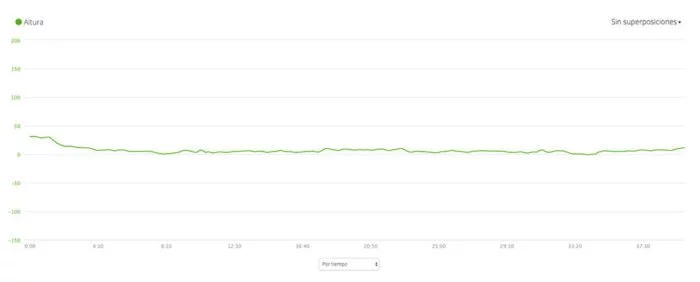
En el caso de los relojes que sí cuentan con altímetro barométrico, tomará los datos registrados por el reloj.
Pero eso no son los datos reales que verás durante la actividad. Puedes activar un campo de altitud, pero tomará los datos a través de GPS. Y ese registro puede ser de todo menos fiables (el GPS está diseñado para ser preciso en 2D, pero no en 3D).
Puede que en tus entrenamientos lo habitual sea correr en rutas principalmente llanas y no le hagas caso a los metros ascendidos. En tal caso la altitud es algo que puedes descartar totalmente.
Pero en ciclismo, si te gusta ver los metros positivos que llevas acumulados tras pasar por varios puertos, no podrás hacerlo a mitad de actividad, tendrás que esperar a sincronizar porque los datos con los que cuentas a mitad de entrenamiento son totalmente inservibles.
Para que puedas verlo perfectamente, fíjate en este entrenamiento. Como podrás ver voy pegado al mar, no hay apenas altura que ganar. Llevo un reloj con altímetro barométrico (Suunto Ambit3 Vertical), mientras que el Forerunner 230 y el Forerunner 735XT sólo registran la altitud a través de los datos de GPS.
Más allá de la escala en la que se encuentran (no suelo hacer calibración de altitud salvo que tenga muy claro que voy a hacer un entrenamiento «de altura»), que se puede ver que el altímetro barométrico del Ambit3 está ligeramente alto ese día (por la presión atmosférica), puedes comprobar como una vez llegado a casi nivel del mar, el registro del Suunto es practicamente una línea recta, con las ligeras variaciones propias de subir o bajar un metro.
En cambio los dos modelos de Garmin calcan el registro irreal de altitud, haciendo subidas y bajadas constantes. Sí, la tendencia es parecida, pero los metros de ascenso y descenso acumulados serán mucho mayores en el caso de los dos modelos sin el altímetro barométrico.
Y esto es en un entrenamiento de carrera totalmente llano. Imagina que subes un puerto con 700 metros reales. El 735XT te podrá marcar perfectamente 1.100 metros verticales (o incluso más).
Incido en lo mismo. Si tus entrenamientos de ciclismo o carrera son en trazados primordialmente llanos, no es algo que te vaya a afectar. O si para la bici utilizas un ordenador de ciclismo que cuente con su propio altímetro. Pero es algo a tener en cuenta.
La ausencia del altímetro barométrico también tiene una incidencia menor en el monitor de actividad, como verás más adelante. Y es que a diferencia de otros modelos (incluso de gama inferior), no podrá contar la cantidad de pisos subidos o bajados.
Funciones de conectividad
Además de todo lo anterior, no hay que olvidar que el Forerunner 735XT tiene también función como reloj inteligente. Gracias a la conectividad Bluetooth (sólo para datos, no para sensores) el reloj interactúa con tu teléfono móvil, como cualquier otro reloj de Garmin de los últimos años y la práctica totalidad de relojes deportivos actuales.
Por tanto tendrás notificaciones en pantalla (que sólo podrás consultar, pero no interactuar con ellas como sí es posible con el Apple Watch o relojes Android Wear) o sincronizar actividades y datos del monitor de actividad de forma automática e inalámbrica.
La plataforma para notificaciones continúa mejorando, porque hasta ahora los emoticonos no aparecían en pantalla. Pero la última versión 3.30 incluye soporte para poder mostrarlos, mejorando algo más las notificaciones. No obstante, aún hay algunos problemas a la hora de visualizar notificaciones, especialmente si son múltiples notificaciones de la misma aplicación (por ejemplo mensajes de varios contactos de WhatsApp).
Todo esto hablando de su uso fuera de entrenamientos. Mientras estás corriendo o practicando cualquier otra actividad hay otras funciones que también podrás disfrutar, siempre que lleves tu teléfono encima.
Por ejemplo el teléfono facilita mensajes hablados con alertas de distancia y velocidad, si así lo has configurado en la aplicación.
También podrás hacer LiveTrack, pudiendo enviar un enlace a familiares o amigos que podrán seguir tu entrenamiento en vivo. No sólo la ubicación, sino también métricas como velocidad, frecuencia cardíaca, etc.
Tanto las notificaciones móviles como el resto de opciones dependen directamente de la aplicación móvil, que está disponible para Android, iOS y también Windows Phone. Recuerda un detalle importante, debes emparejar el reloj a través de la aplicación, y no desde los ajustes de Bluetooth del teléfono.
Por último he de destacar que, al igual que el resto de modelos de Garmin de los últimos años, el 735XT es compatible con la plataforma de aplicaciones Connect IQ. Pero con una importante novedad, y es que tiene más capacidad de memoria y es directamente compatible con la última versión de Connect IQ (Biker Monkey). Aunque hoy por hoy no hay diferencias entre la primera y la segunda versión de Connect IQ, es previsible que más adelante comencemos a ver algo de fragmentación en el tipo de aplicaciones que podrán instalarse en los primeros modelos o en los últimos adaptados a esta nueva versión.
Errores y fallos
A pesar de ser un reloj que viene en un paquete bastante probado (por compartir la mayor parte de su hardware con el resto de la gama Forerunner), en estas primeras versiones no está exento de algunos problemas menores. Son errores de fácil solución y seguramente se verán resueltos en la próxima actualización que reciba el reloj, no obstante siempre me gusta destacarlos de forma separada. Pero a día de hoy en su versión 3.30 estos son los problemas que he encontrado:
- En ocasiones no conecta con sensores externos de ciclismo de forma automática. Por ejemplo, con medidores de potencia o sensores de cadencia y velocidad. En algún entrenamiento he recogido datos de potencia desde el Edge 520, pero inexplicablemente el 735XT no se llegó a conectar. También me ha ocurrido con el radar Garmin Varia. Si hacía la conexión de forma manual entonces no había problema. Pero si había problemas de desconexiones, en ocasiones volvía a conectar y en ocasiones debía apagar y encender el radar para que ambos dispositivos volviesen a estar conectados.
- Junto al problema anteriormente expuesto se une otro más, y es que no es posible acceder al menú desde dentro de la actividad. Para nada. Sólo cambiar campos de datos de la pantalla seleccionada. Ni calibrar el medidor de potencia, ni conectar con otro sensor (para cuando no ha conectado correctamente), nada. Y esto, sin duda, es el problema más importante ya que limita su uso si no quieres salir de la actividad en curso.
- Después de realizar la prueba de autonomía y dejar que el reloj se quede sin batería, perdió el archivo de idioma. Al volver a encender había perdido la hora, pero también se había configurado el idioma en inglés. Dentro del menú de configuración el idioma español no estaba presente. Si te ocurre esto, deberás conectar el reloj al ordenador e instalar el idioma a través de Garmin Express.
A pesar de esto, el software es bastante estable a día de hoy. Pero todo es mejorable, y es necesario que Garmin resuelva los pequeños problemas detallados más arriba.
Comprar Garmin Forerunner 735XT
Si quieres colaborar con la página y ayudar a que pueda seguir realizando pruebas tan extensas como esta (que requiere de muchas horas de trabajo), compra tu reloj a través de los enlaces que facilito. De esa forma recibiré una pequeña comisión sin ningún coste para ti. Y no olvides compartir la prueba con tus amigos, además de ayudarme a mi tus amigos estarán tremendamente agradecidos por descubrir este sitio.
Hay varios packs que puedes comprar, dependiendo del contenido del mismo. Y en cada pack podrás elegir el color del reloj (entre negro o azul, ambos los has podido ver en las fotos de la prueba). Para resumirlo, puedes comprar el Garmin 735XT de cualquiera de estas maneras:
- Garmin Forerunner 735XT sólo reloj. Tendrás sensor de pulso óptico, pero no tendrás métricas de carrera avanzada, test de lactato o frecuencia cardíaca en la natación, por ejemplo.
- Garmin Forerunner 735XT pack run. Incluye el sensor HRM-Run v2 (el de color rojo), que podrás usar para tener todos los datos avanzados de carrera así como para tener mayor precisión los días de series o ciclismo.
- Garmin Forerunner 735XT pack Tri. Incluye los sensores HRM-Tri y HRM-Swim, por lo que lo tendrás todo.
https://www.amazon.es/dp/B01DWIY3TK&tag=c1mes-21
https://www.amazon.es/dp/B01DWIY39A&tag=c1mes-21
Este es el pack Run
https://www.amazon.es/dp/B01DWIY72I&tag=c1mes-21
https://www.amazon.es/dp/B01DWIY3B8&tag=c1mes-21
Y por último, el pack Tri
https://www.amazon.es/dp/B01DWIY6W4&tag=c1mes-21
https://www.amazon.es/dp/B01DWIY3WW&tag=c1mes-21
Opinión Garmin Forerunner 735XT
El Forerunner 735XT es un reloj MUY completo, no me cabe la menor duda. Dejará satisfecho a la inmensa mayoría de usuarios. De hecho, incluye algunas características que aún no se habían visto en otros modelos (récords de natación, entrenamientos avanzados en natación que se estrenaron con este modelo, navegación con indicaciones, compatibilidad con Varia Radar y Varia Vision, etc.). Por desgracia hay algunas carencias que ensombrecen un poco el conjunto.
Como reloj de carrera se comporta perfectamente, con las mismas opciones que podemos encontrar en el Forerunner 630. De hecho se convierte en lo que muchos usuarios pedían, un Garmin Forerunner 635 con sensor de pulso óptico, ya que hay muy pocas diferencias entre ambos modelos. Además del sensor, sólo la pantalla táctil y la conectividad WiFi. Aquello de lo que cualquiera está dispuesto a prescindir.
Pero se hace extraño en un reloj con tantas raíces en el ciclismo la ausencia de un altímetro barométrico. Encarar entrenamientos en los que tengas que cruzar puertos de montaña y buscar un determinado desnivel acumulado (todos tenemos entrenamientos de este tipo de vez en cuando, a nuestros entrenadores les gusta vernos sufrir) es mucho más complicado con el 735XT, y es que la altitud basada en el GPS es básicamente inútil. Sí, tras la sincronización de la actividad los datos de altitud estarán corregidos, pero mientras entrenas estarás prácticamente a ciegas.
Otro aspecto a valorar es la autonomía, al menos si tienes pensado competir en larga distancia. Dependiendo de tus expectativas de carrera, las 14 horas con uso de sensor de pulso óptico se pueden quedar cortas para algunos, aunque tampoco creo que ese sea el factor que más personas echará para atrás.
Lejos de la impresionante lista de especificaciones del Forerunner 735XT, lo que más echo en falta en él es personalidad. Hasta ahora la gama multideporte de Garmin siempre ha sido especial en cuanto a diseño. Todos los que terminan en XT siempre han sido relojes diferentes a nivel estético. Cuando veías a alguien con un 310XT, 910XT o 920XT sabías que su portador estaba igual de pirado que tú. No le vale con nadar, correr o montar en bici; hay que hacerlo todo. Es ver el reloj y cruzar una mirada cómplice.
Indudablemente el 735XT ha mejorado en cuanto a su estética (que no en materiales), con un tamaño más reducido y una forma mucho más estándar. Creo que estarás de acuerdo conmigo en que el 735XT es bastante más bonito que la saga que le precede. Pero ha perdido el alma para convertirse en un modelo más de la gama Forerunner. Es un reloj muy capaz, pero le falta carisma. Y más allá de la ausencia de altímetro barométrico, es lo único que le echo en falta, el ser diferente
¡Gracias por leer y apoyar la página!


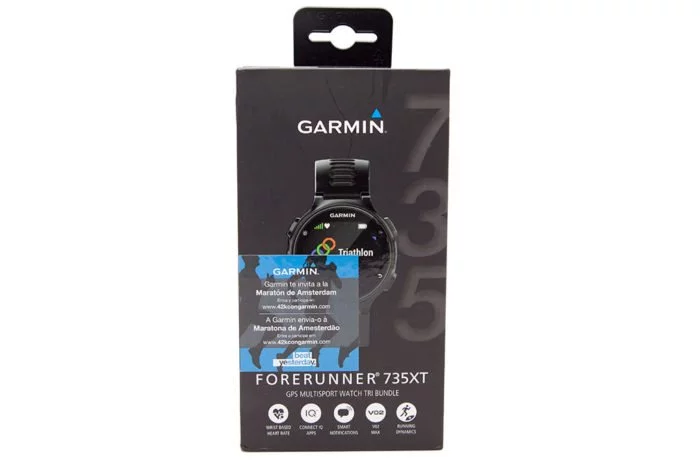
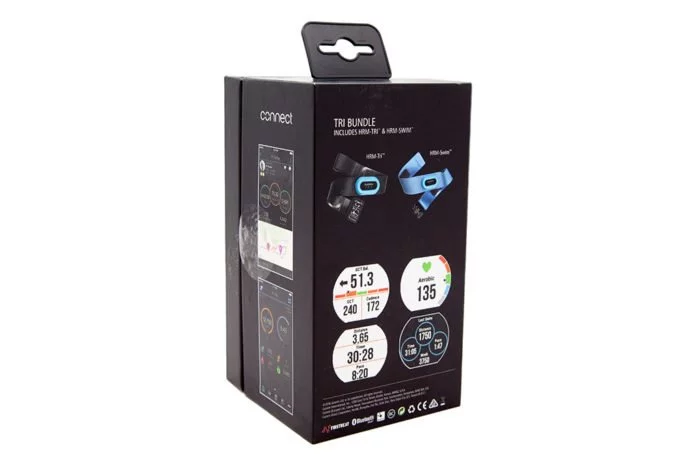
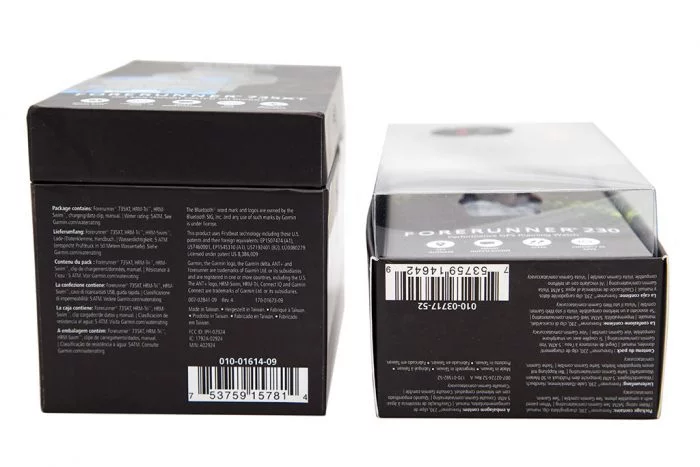
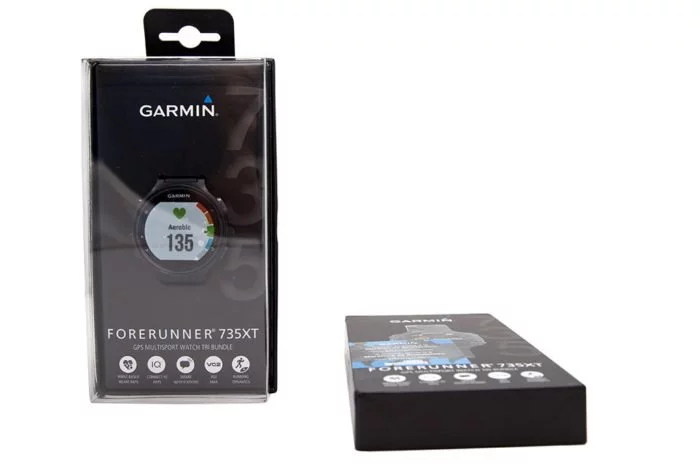
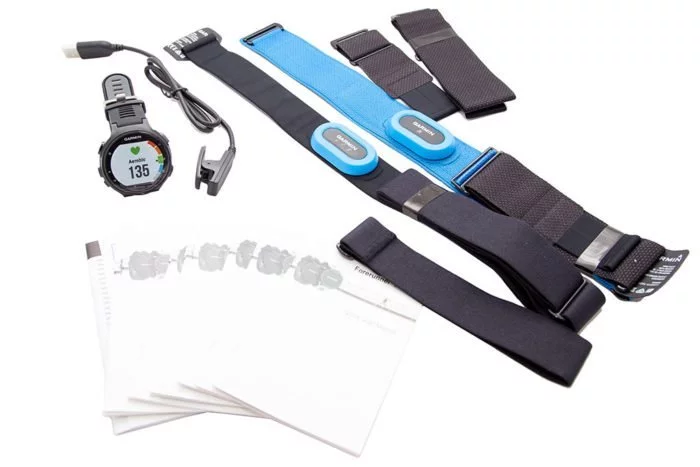
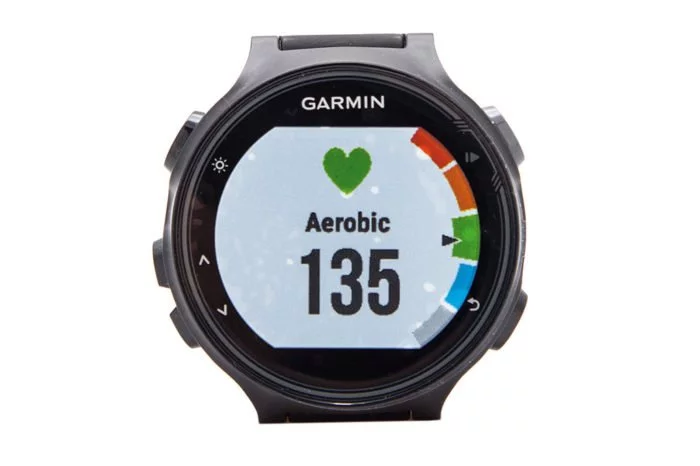
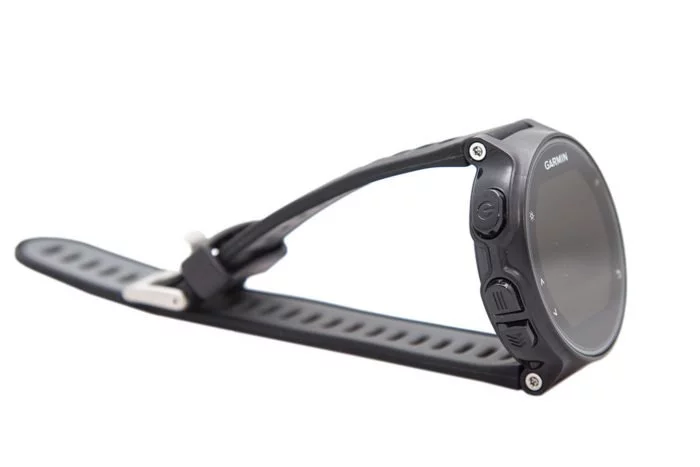
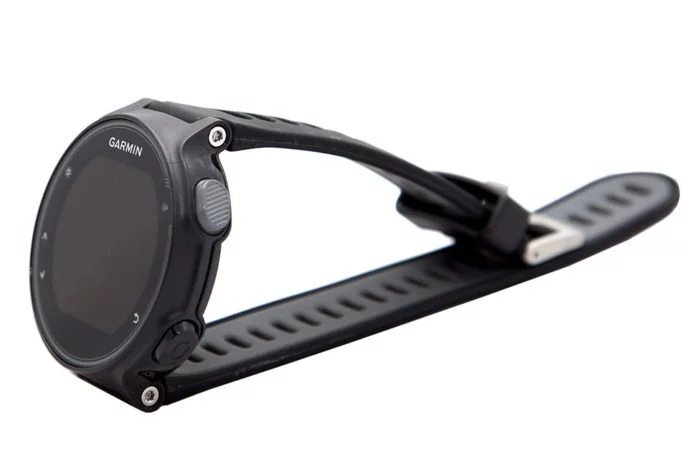
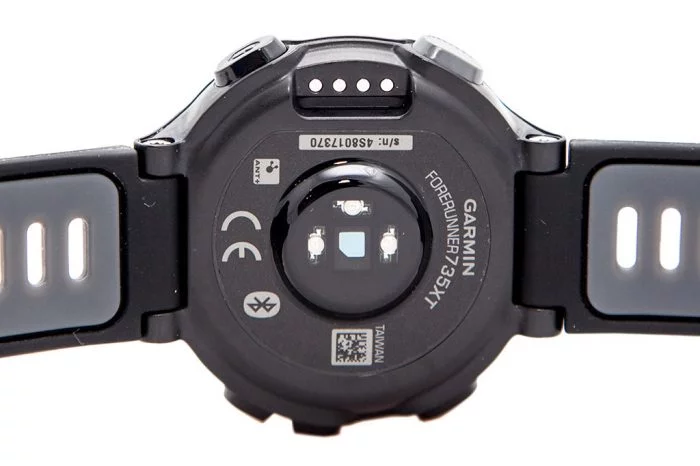
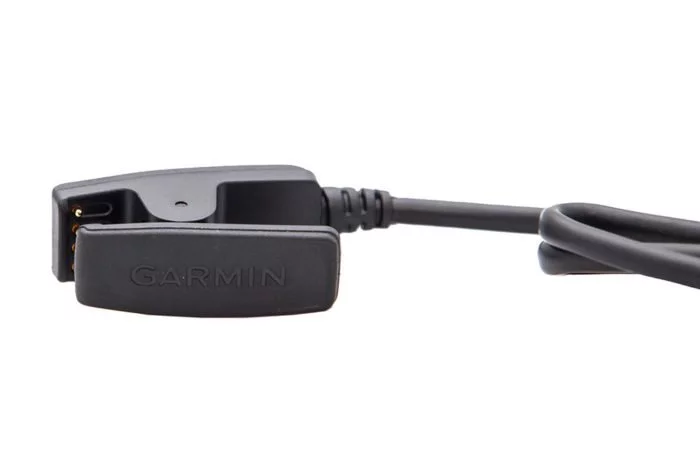
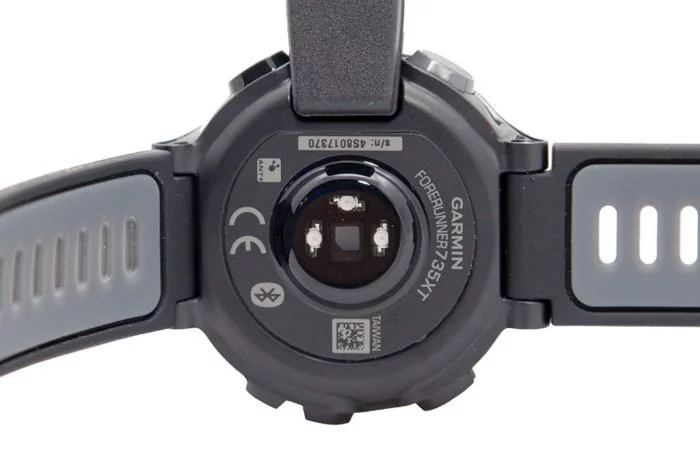
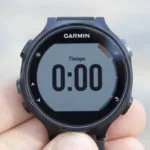
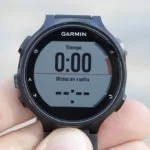
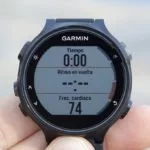
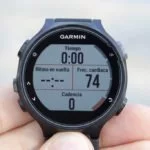
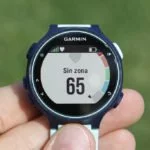
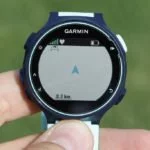


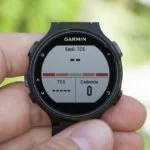
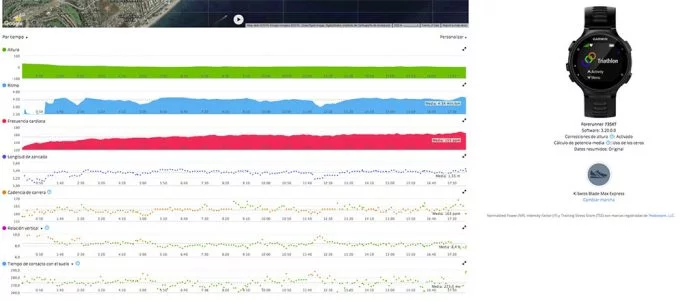

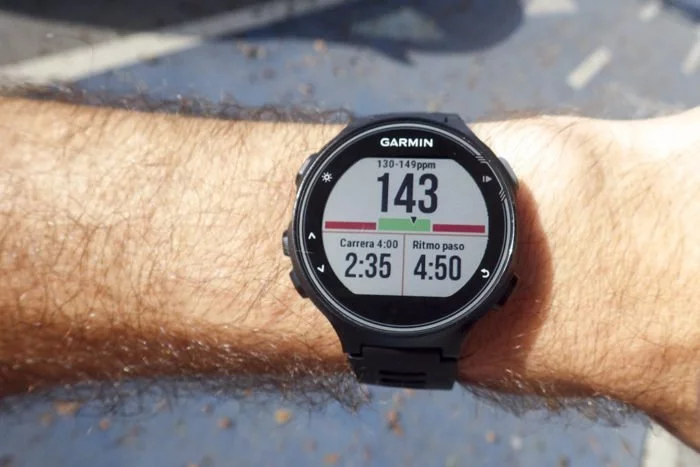
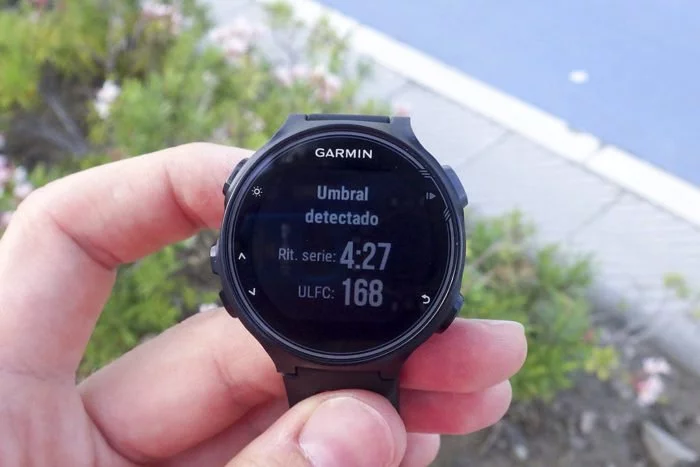
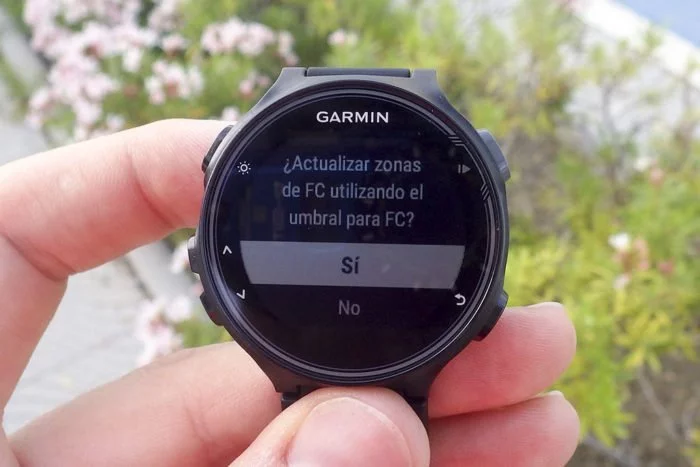
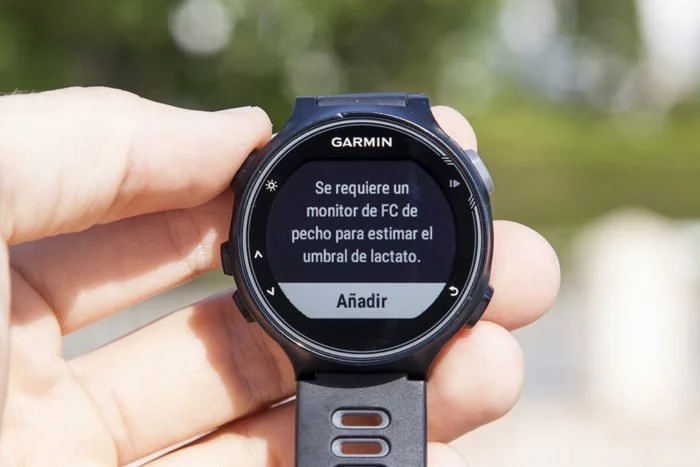
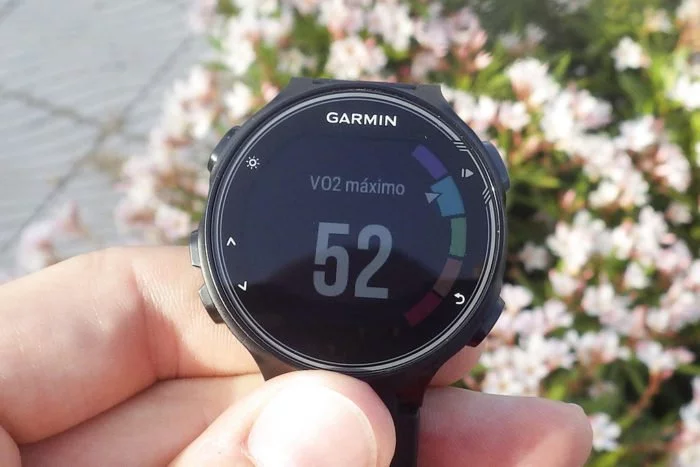
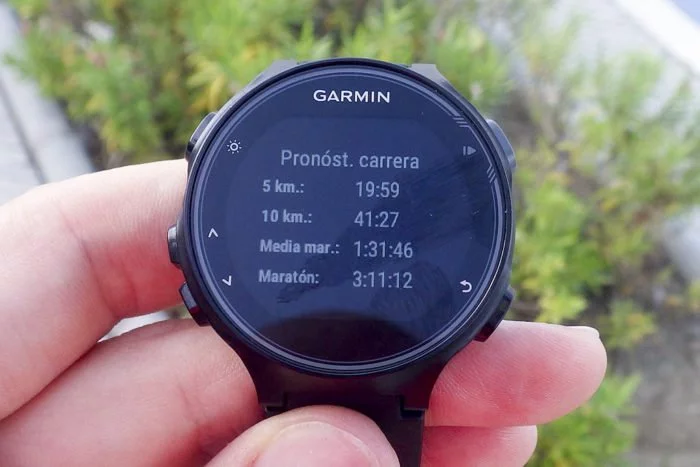
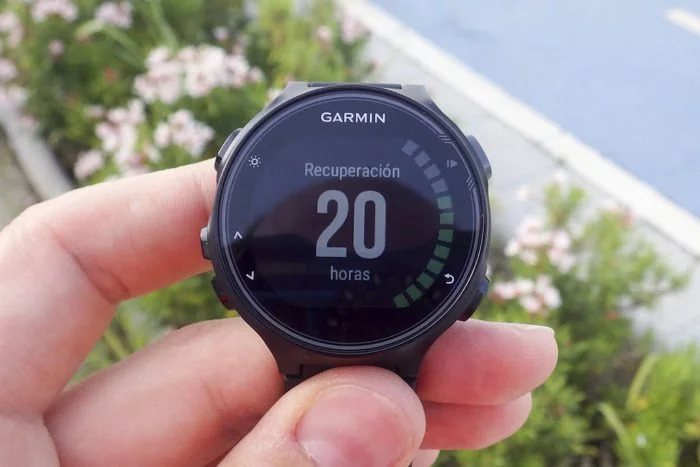
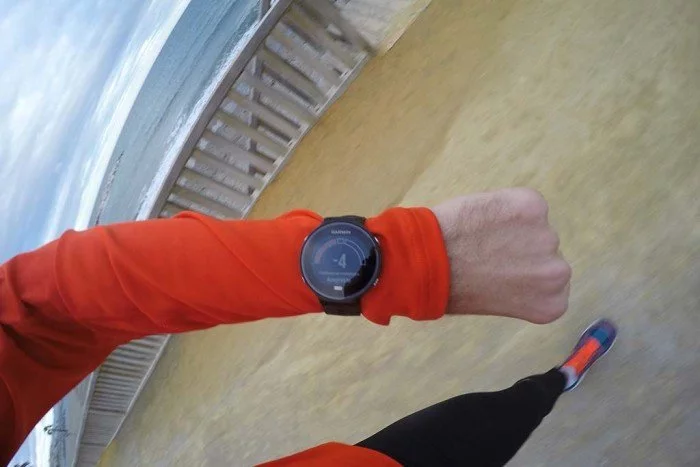

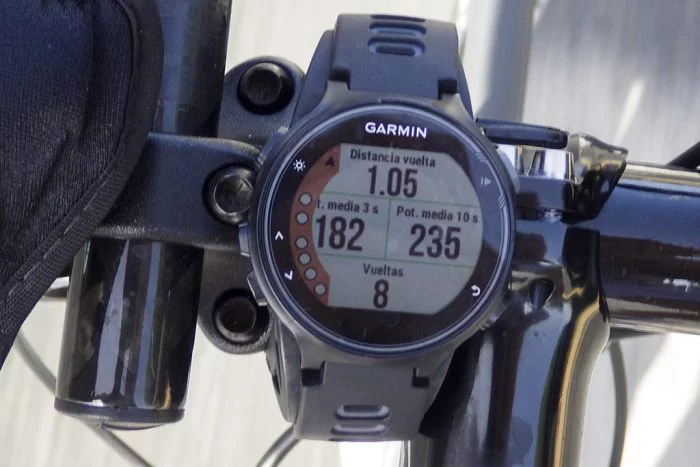

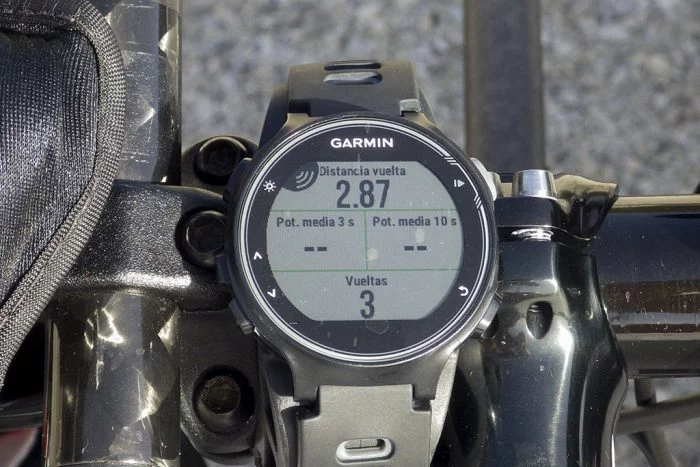
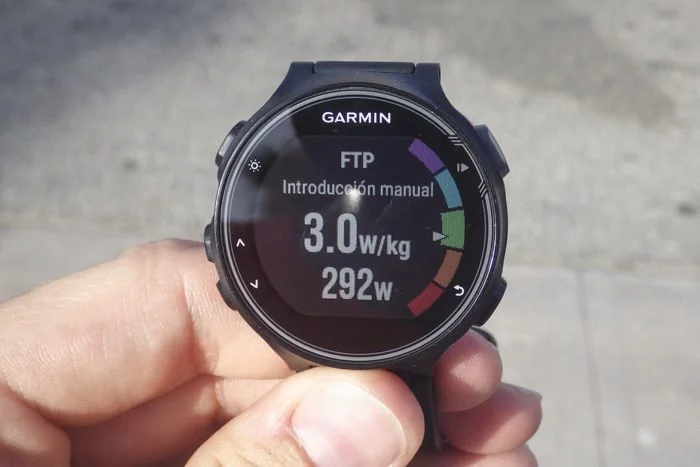
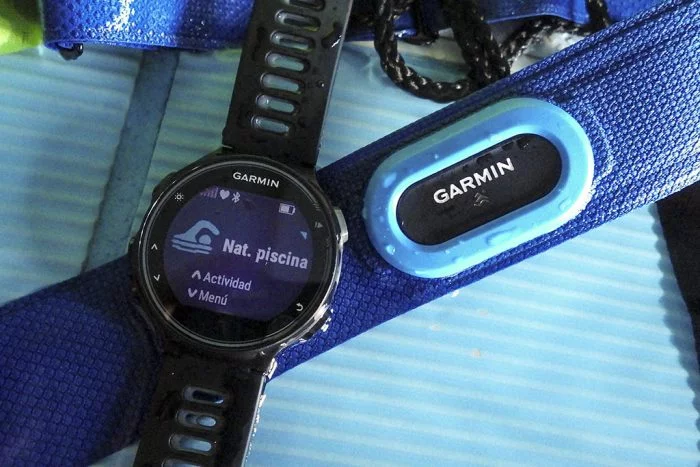
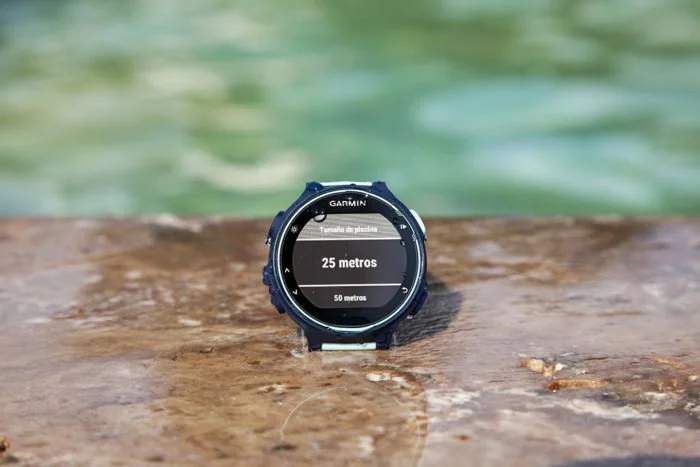

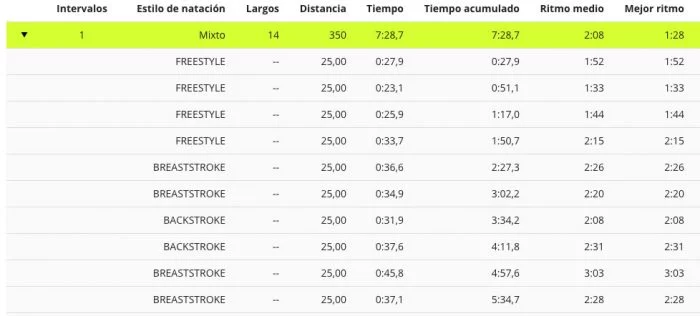
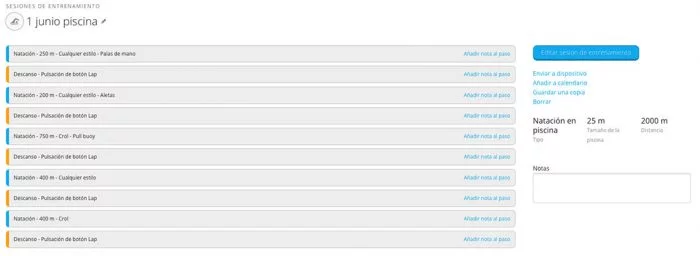
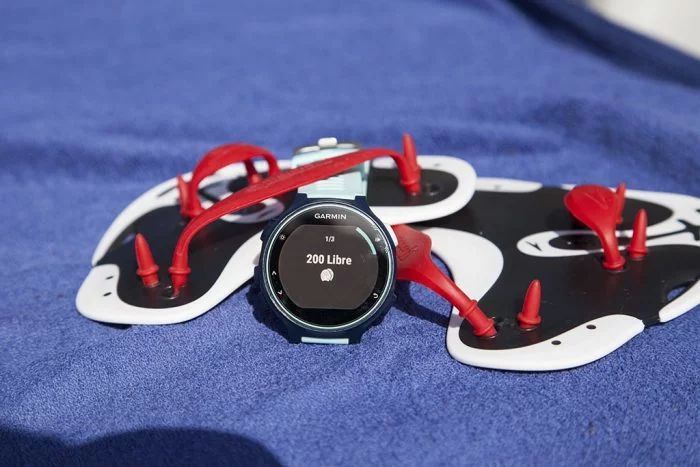
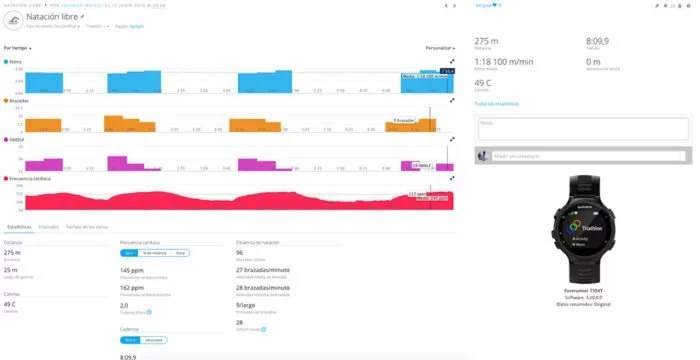
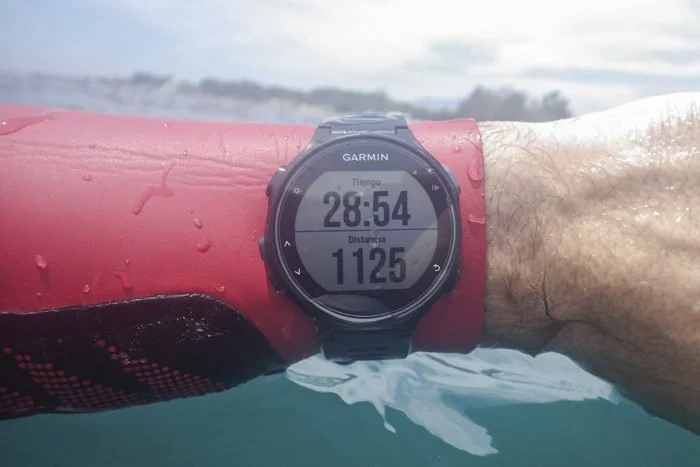
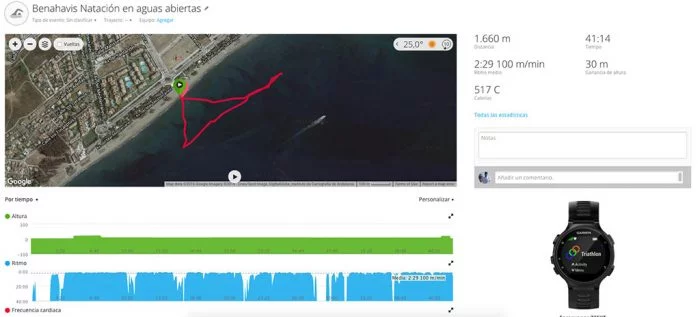
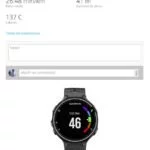
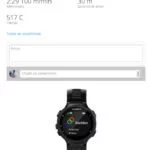
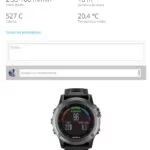
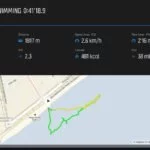
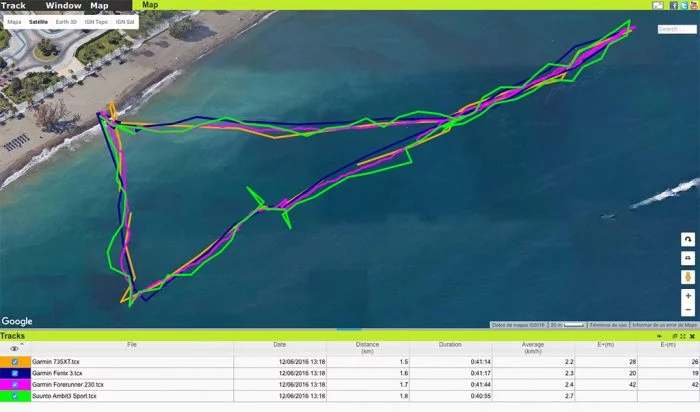

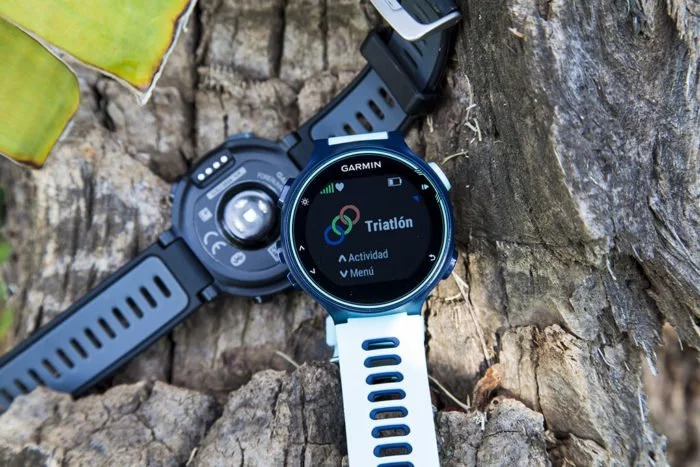
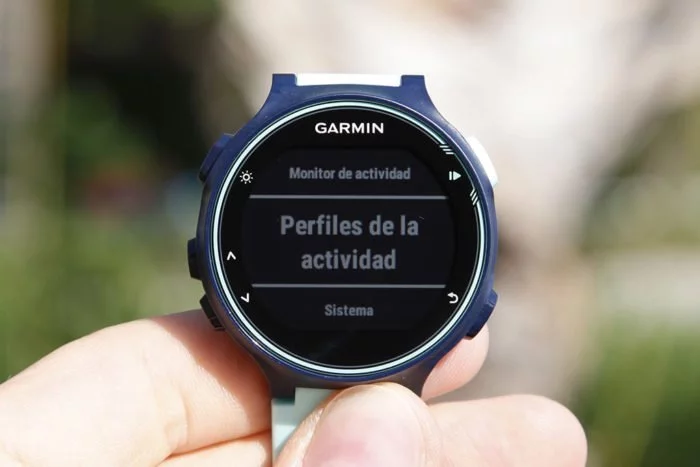
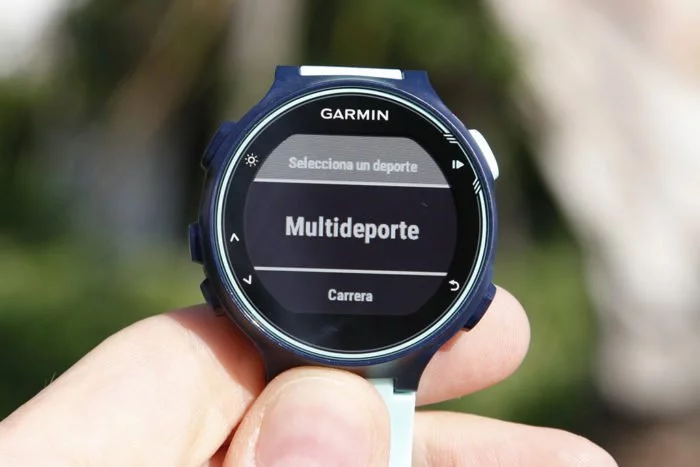
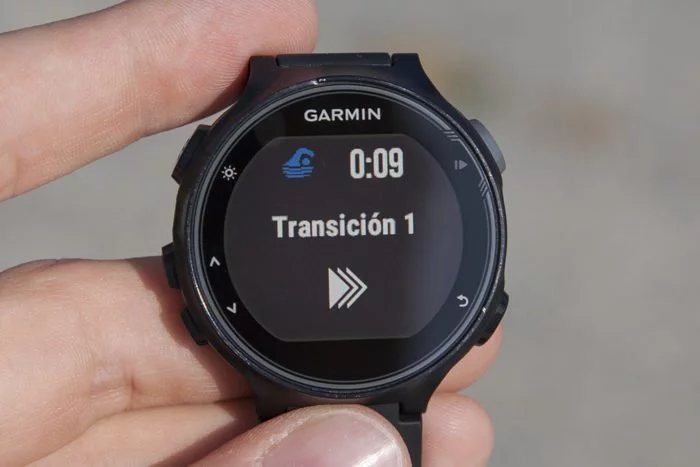
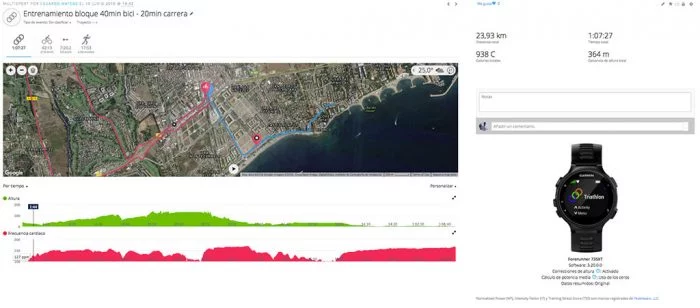
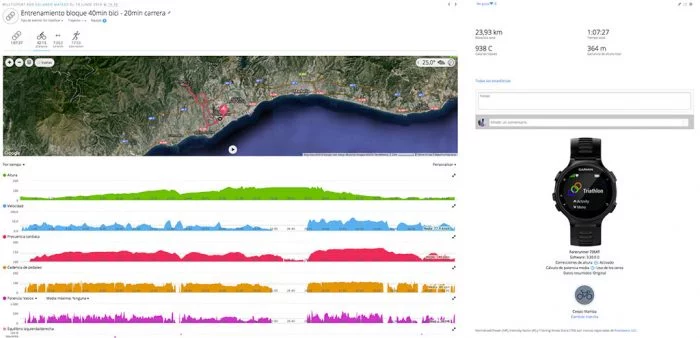
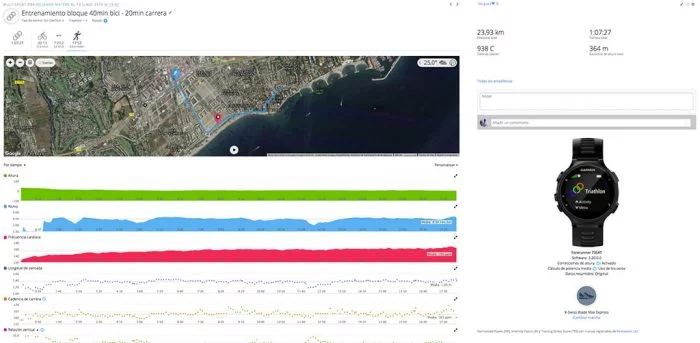
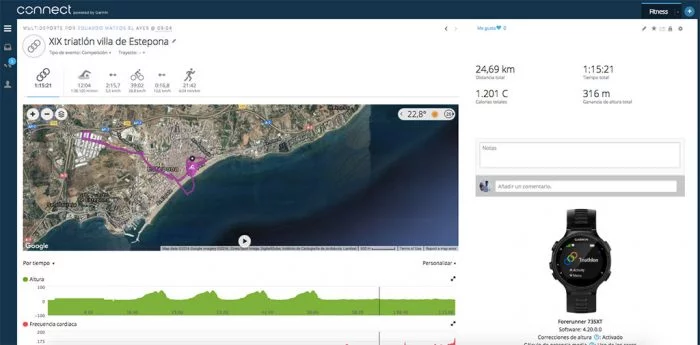
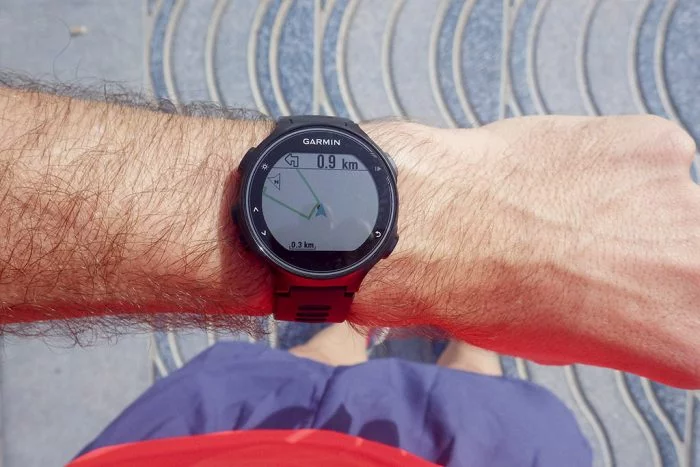
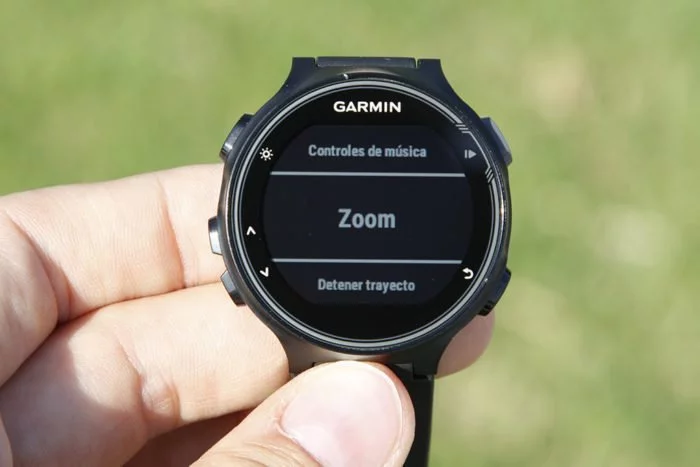
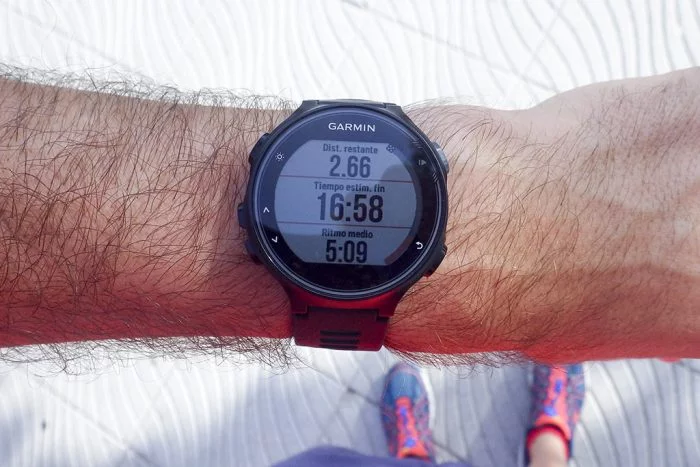
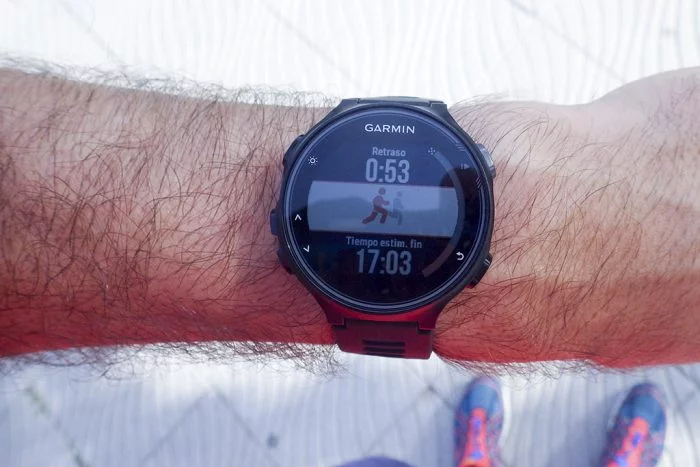
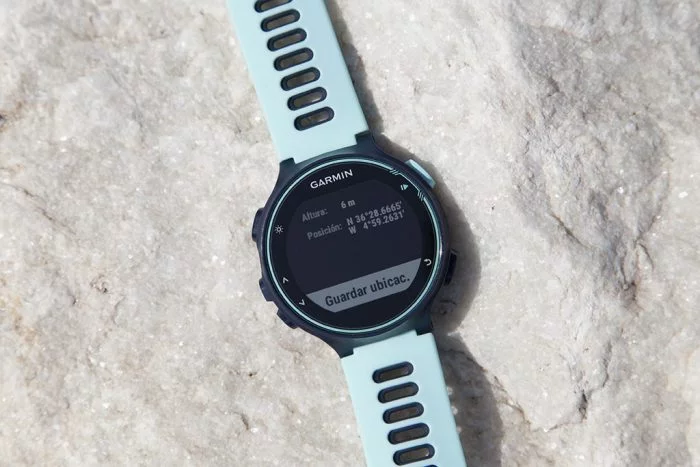
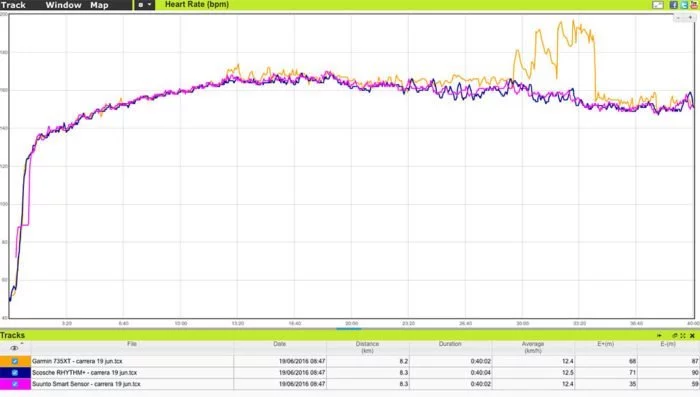
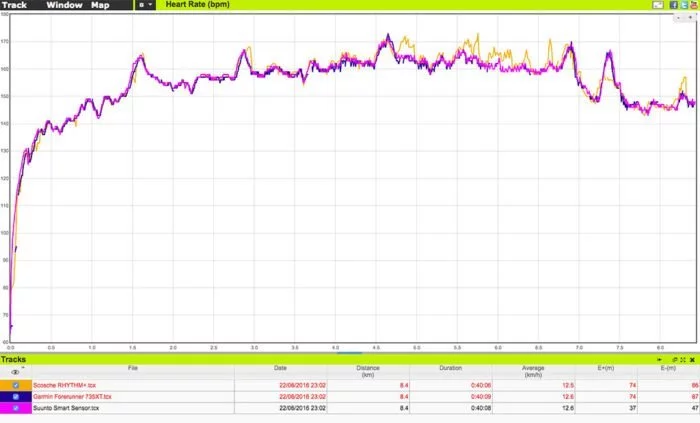
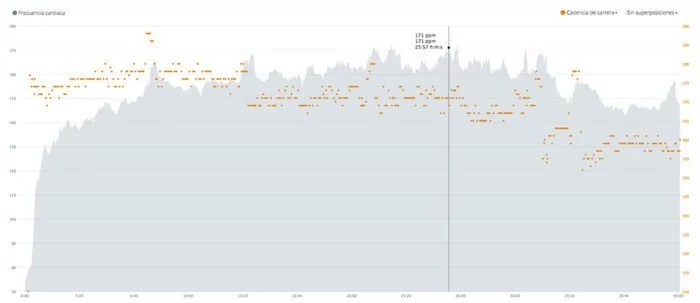
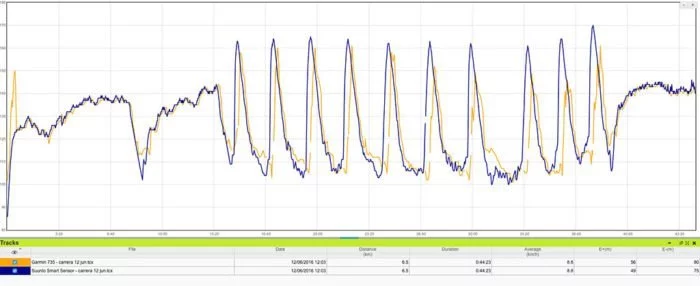
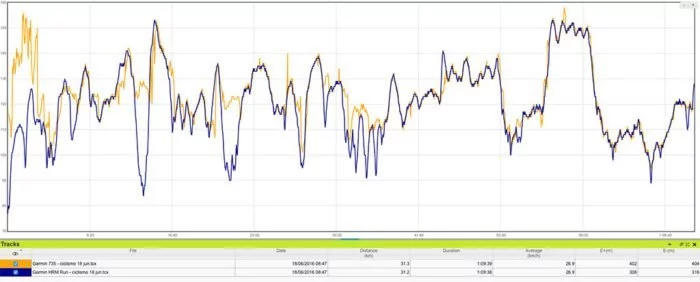
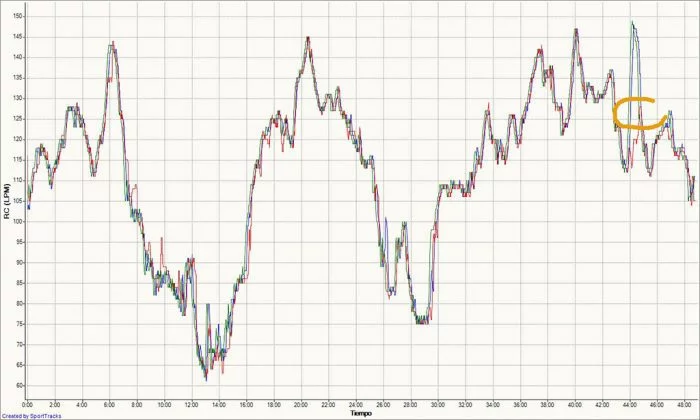
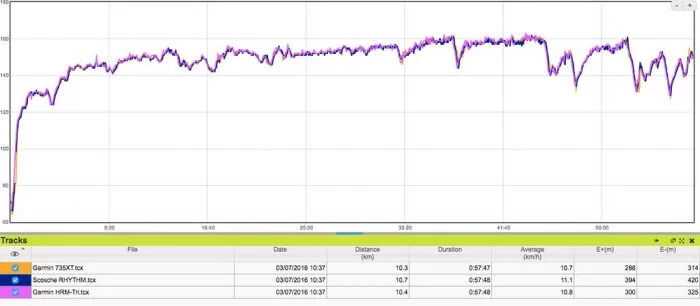



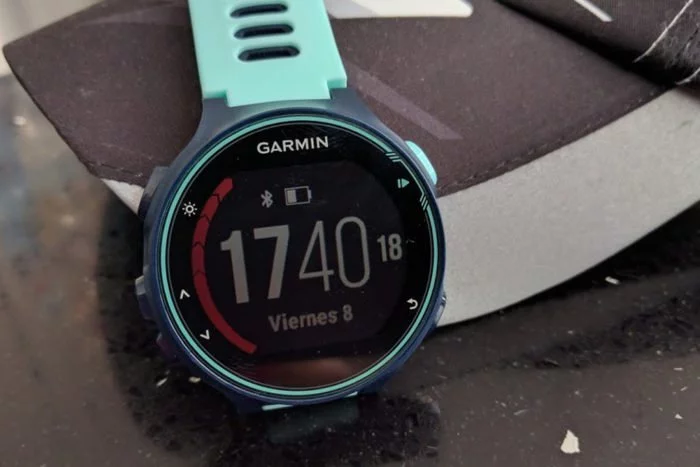
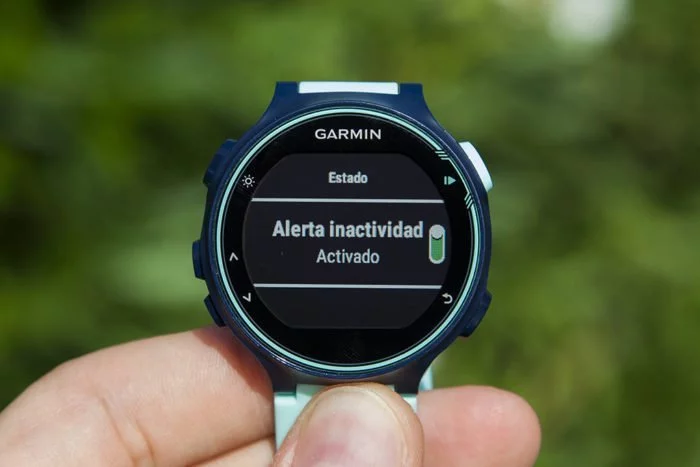
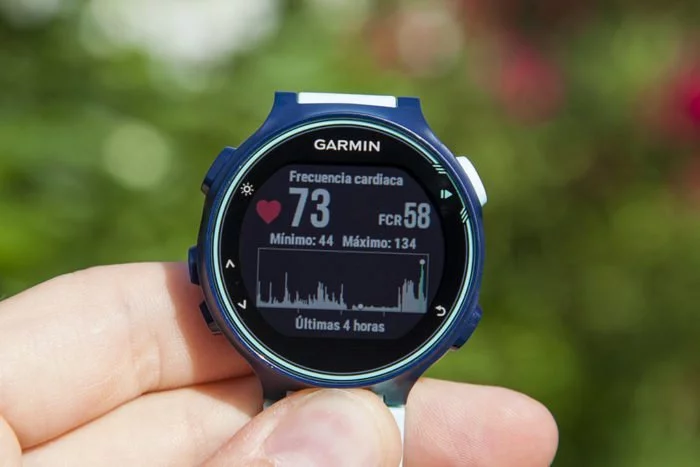
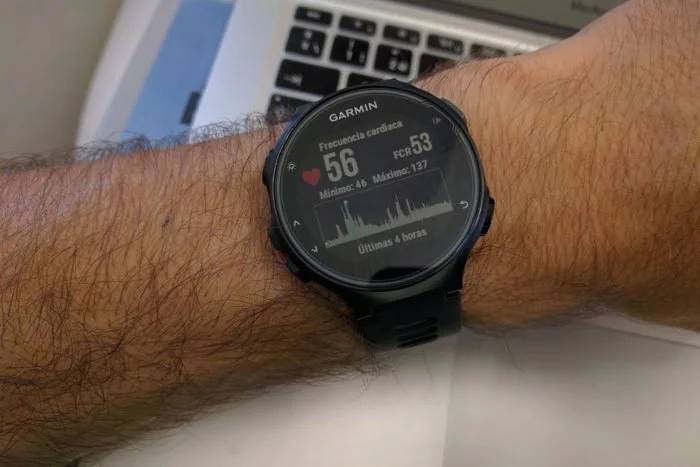
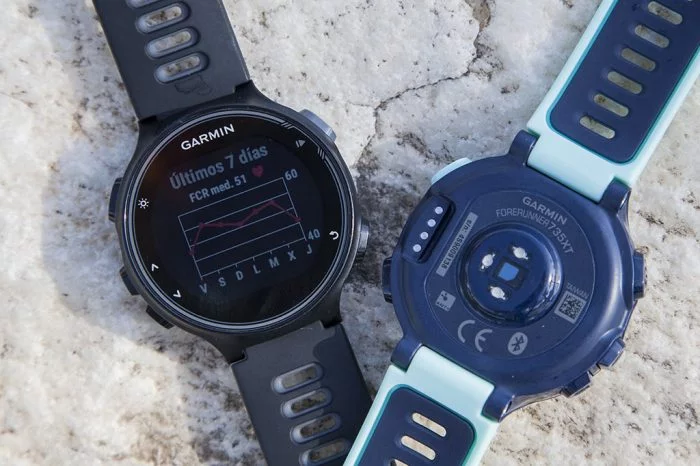
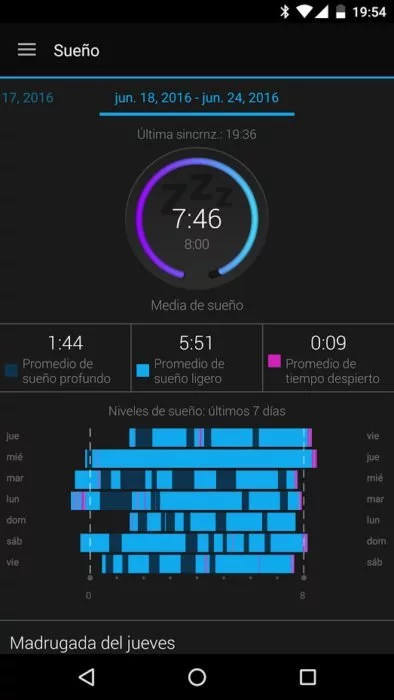
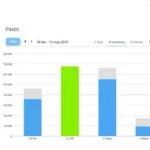
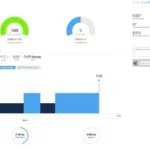
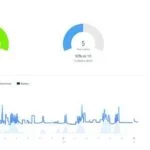

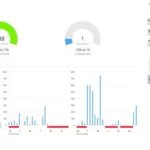
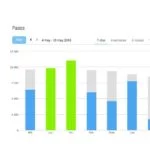
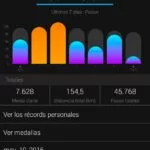

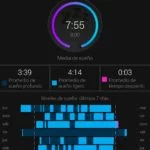
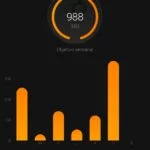



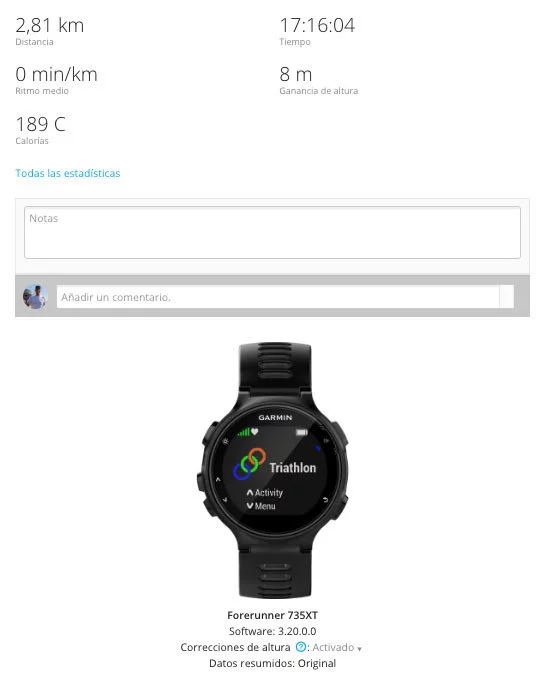

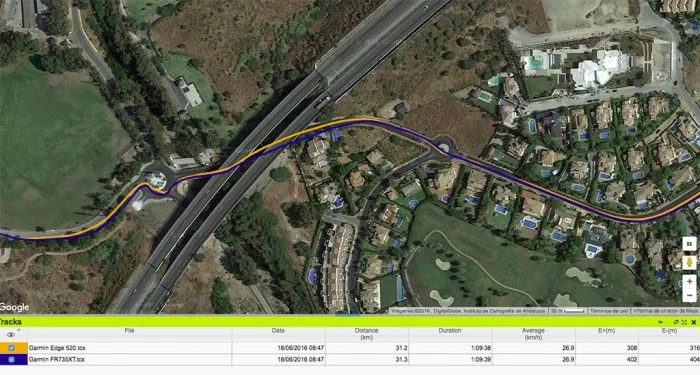
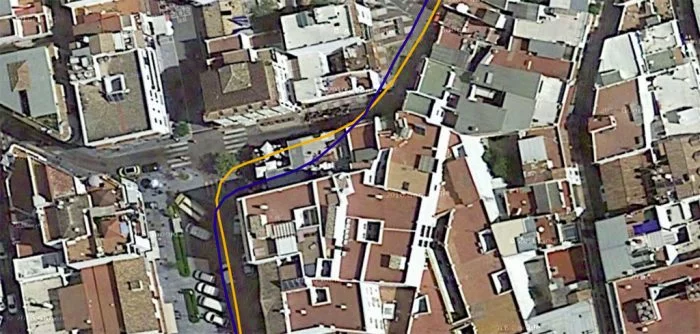
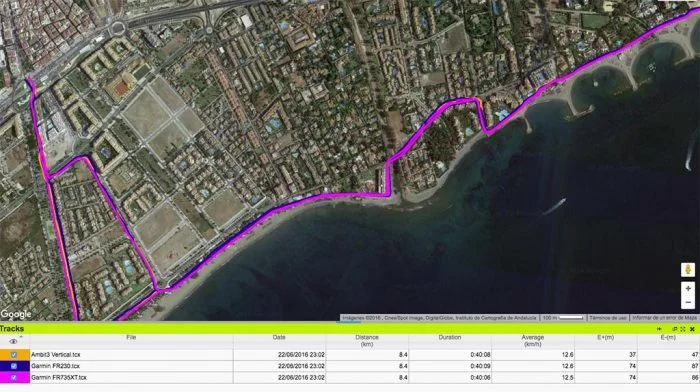
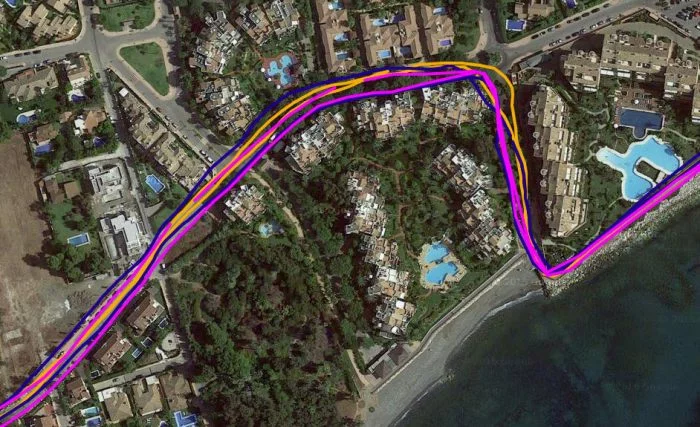
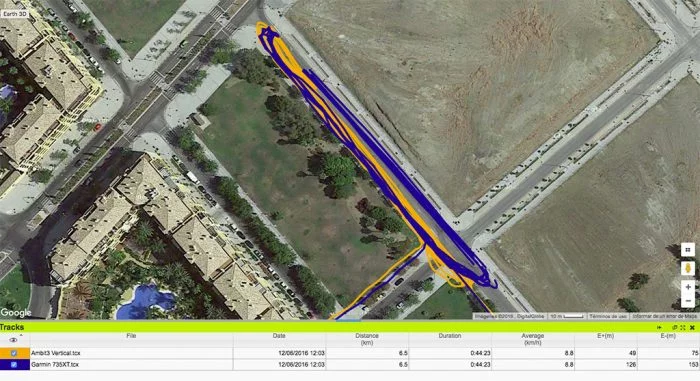
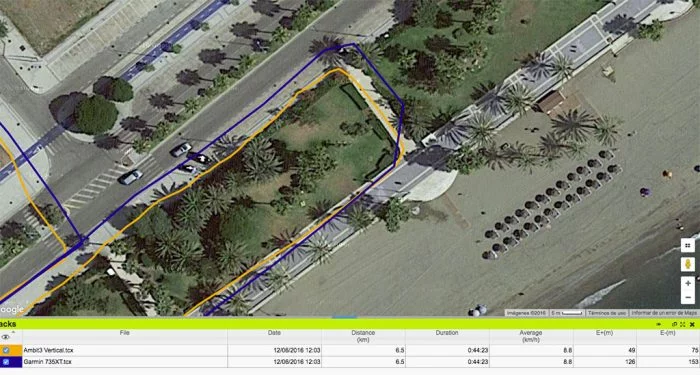
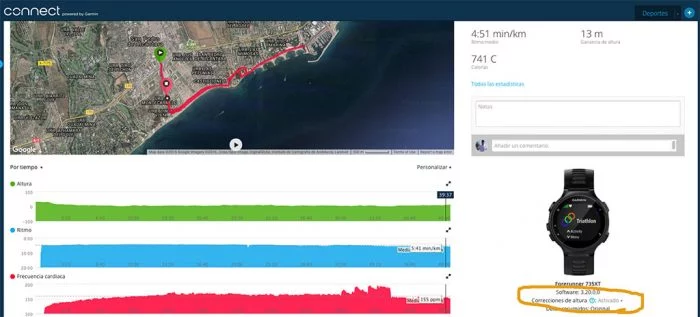
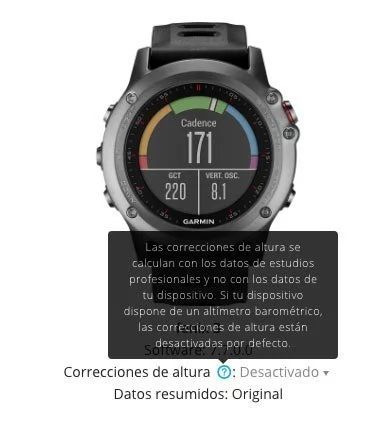
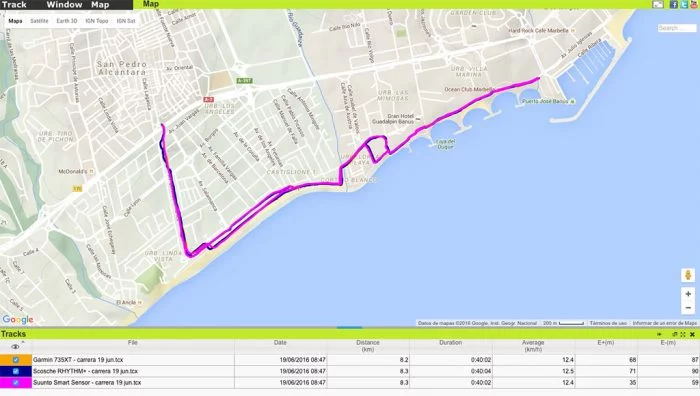
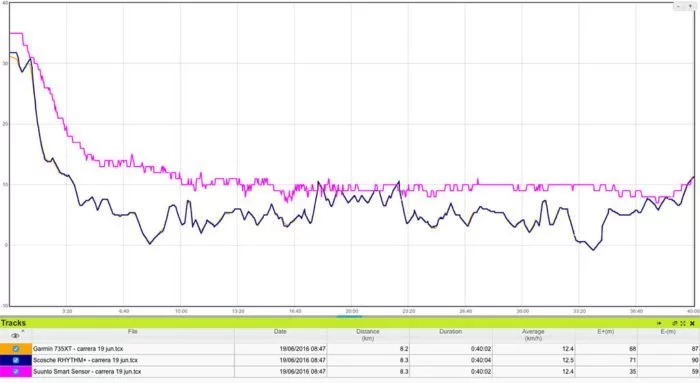
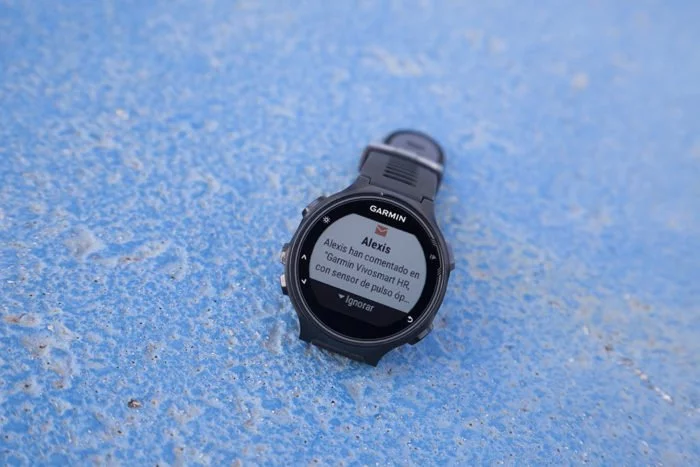
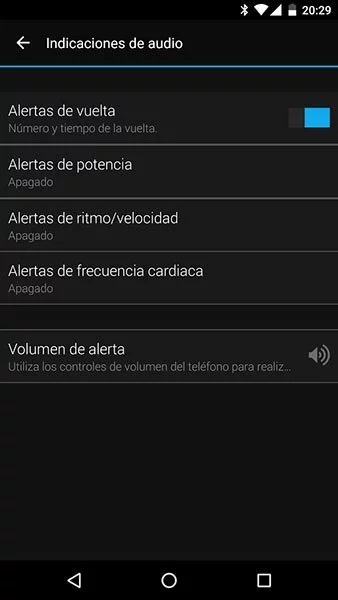

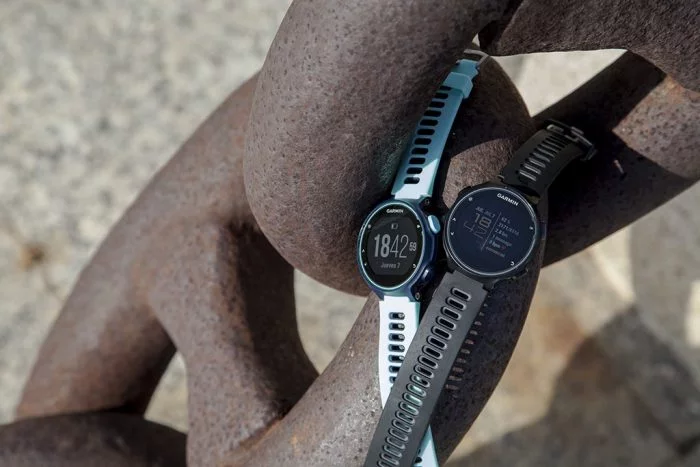
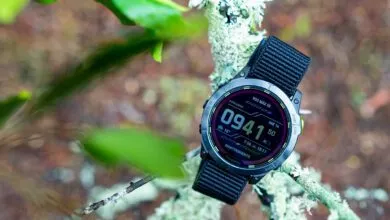

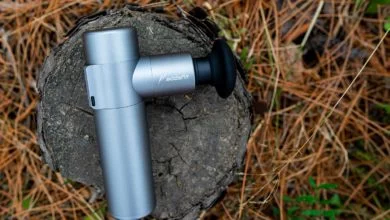
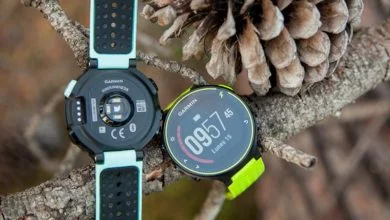
Garmin Forerunner 735xt vs Garmin Fenix 3 HR… si te regalasen uno cual elegirías? 3 motivos rápidos… muchas gracias por tus análisis!
Estéticamente me gusta más el Fénix 3 y cuenta con altímetro barométrico.
Pero el 735XT al ser más nuevo tiene alguna prestación más, sobre todo en ciclismo.
Difícil decisión, valora el tema de tamaño y peso en la muñeca, es la diferencia más importante.
Me uno a la indecision 🙂
Yo estoy valorando la opcion del 735xt tambien, en mi caso por los siguientes motivos:
– ligereza del equipo
– tengo un ambit2 que lo reservaria para cuando necesite el barometro o navegacion (rutas de pateo por la sierra, seguir rutas del wikiloc, …). le resevaria ese papel y el otro para entrenar y competir.
– y sobre todo me motiva la opcion de los avisos del varia radar en la muñeca…en las salidas de la bici.
¿como lo ves?
Saludos y gracias, crack !!!
Pues sin ninguna objeción. Sobre todo por el tema de Varia Radar, que no tiene pinta que vaya a llegar al Fenix 3 (lo estarán guardando para el 4).
Y teniendo un Ambit2 reservado, las actividades de montaña las tendrás más que cubiertas.
por mi muñeca han pasado los dos y un 920. al final me quedo con el 735XT.Para la mayoria de usuarios es mas versatil y comodo, tamaño, discrecion, peso…
Si vas a hacer IM y no eres muy rápido, quizas la bateria se te quede corta y tendrias pasar a 920. El Fenix muy tocho, bonito.. pero quizas para montaña solo.
Triatletas Sprint,olimpicos, medios…Multideportistas es el publico ideal para este sportmartwatch
Fantástica prueba. Enhorabuena.
Hola Eduardo,
Que pack de sensor cadencia/velocidad recomiendas para el 735xt¿?
Estaba pensando en el wahoo fitness RPM, por el tema de la dualidad ANT+ y BT. ¿Lo ves bien para el garmin, o quizas el propio de la marca?
Un saludo,
Efectivamente, el que recomiendo es el de Wahoo: https://www.correrunamaraton.com/mejor-reloj-gps-2016-2017/#Sensores, bien el de acelerómetros o el de imanes. No optaría por otra opción que fuese sólo ANT+.
Buenas, hace poco que tengo el garmin fènix 3 , tu crees que en pròximas actualizaciones de software habra el umbral de lactato, la navegacion con indicaciones i los giros? Muchas Gracias
El Fenix 3 ya tiene el cálculo de umbral de lactato. En cuanto a la navegación con aviso de giro, dudo mucho que lo reciba.
Hola Eduardo,
Tengo un Suunto Ambit 2 y ahora que puedo hacer un cambio me gustaría algo más ligero y menos tocho, para poderlo llevar todos los días.
He estado leyendo tus análisis sobre el Garmin 735 XT, el 920 XT y el Polar V800 y la verdad es que estoy hecho un lío… busco algo para salir a correr por el asfalto y tierra, algo de trekking y alguna vez nadar en piscina descubierta.
Muchas gracias.
Si tienes en cuenta la ausencia de altímetro barométrico y no te preocupa demasiado, el 735XT es la mejor opción. Y más ahora con el precio que tiene en Retto.
Muchas gracias por todo.
En estos momentos la ausencia de altímetro barométrico no me preocupa, pero sí que miro es como está saliendo esta unidad y que al ser de plástico no le ve un poco endeble.
Apenas conocía tu pagina y me está encantando.
Una cosa que no me queda clara; tiene alertas por vibración en los distintos deportes? (si paso de 4.30 corriendo o de 1.30 nadando por ejemplo, o cada cierto tiempo que vibre…)
Gracias
Sí, en cada deporte podrás configurar alertas específicas
Perdón por el mensaje anterior, pero es la primera vez que hago algo de esto.
En la comparativa en aguas abiertas también comparas los resultados con el forerunner 230.
El 230 también se puede usar para nadar en aguas abiertas?
Mide la distancia nadada?
Es que me he leído vuestro análisis sobre él y no he encontrado nada que haga referencia a la natación.
Muchas gracias de antemano y enhorabuena por el gran trabajo realizado.
Saludos
El Forerunner230 no tiene metricas de natacion.
Pero claro, si te lo pones debajo del gorro de natacion, lo mas hermeticamente posible, puedes acabar obteniendo el trazado del nado «aproximadamente». Como por ejemplo hemos hecho muchos de nosotros con el tocho del garmin305 😛 en la cabeza !!! que tiempos !!! jejeje
Exacto, como dice Xavi el 230 no tiene métricas. Simplemente lo uso bajo el gorro de natación para tener datos de distancia más precisas al llevarlo siempre por encima del agua.
Si va en la muñeca, mueren gatitos…
Muchas gracias a los 2.
Soy nuevo en esto y la verdad es que tengo mucho que aprender.
Saludos
A ver si me podéis ayudar.
Busco un Pulsómetro con gps que me sirva para correr, bici y natación en aguas abiertas (sin tener que meterlo en el gorro de natación ;-)), aunque no es necesario que sirva para triatlón.
También busco que tenga seguimiento de tracks.
Este 735xt me gusta mucho pero se me va de precio.
Alguna sugerencia?
Muchas gracias por todo y enhorabuena por el gran trabajo.
Saludos
Te puede servir el Ambit3 Sport, que ahora mismo tiene un precio auténtica oferta en Amazon: https://www.amazon.es/gp/offer-listing/B00MN96TXS/ref=as_li_ss_tl?ie=UTF8&condition=new&linkCode=sl2&tag=c1mes-21&linkId=e69545f020102679dea3e2cc9ff674c9
Muchas gracias por tu rápida respuesta.
Le echaré un vistazo.
Saludos
Hola,he estado leyendo la descripción y me queda una duda….Tiene cronómetro???
Gracias
Cronómetro por separado no. Tienes el tiempo de actividad.
Hola Eduardo
¡Muchas gracias por este pedazo de análisis y enhorabuena por este gran blog!. ¡Es una auténtica guía detallada y un manual de instrucciones! Estoy buscando un reloj que mejore a mi tomtom runner cardio. Mis actividades son correr, bicicleta outdoor e indoor y natación, por ahora sólo en piscina, pero aspiro a hacer triatlón, por eso apunto a este tipo de reloj. Tengo varias preguntas.
La primera es: ¿Se le pueden descargar rutas como, por ejemplo, de wikiloc? Creo que no, porque no lo he leído por ningún sitio, pero mejor preguntar.
Otra: Para aumentar la duración de la batería y si no quieres que te esté «espiando» todo el día, ¿Se pueden desactivar las funciones propias de una smartband: seguimiento contínuo de pulsaciones, análisis de sueño, que te avise para moverte, etc.?
La tercera es: He leído que, en la actualidad, no hay sensor óptico que funcione correctamente bajo el agua, por lo que para tener lecturas de pulsaciones en el agua, es necesaria la banda, así como para otras métricas complejas, tanto en ciclismo como corriendo. ¿Cómo de cerca crees que está el sensor óptico que «jubile» a las bandas pectorales? Por lo que puedas saber ¿Está esto muy próximo y merece la pena esperar o aún le queda bastante?
La última es: He estado valorando otros dispositivos más económicos, como el Tomtom Adventurer, más que nada, en lugar del Tomtom Runner 3 porque el Adventurer tiene el altímetro y, aunque está más pensado para deportes de montaña, también incluye modos de los deportes que practico. Se que ni el Adventurer ni el Runner 3 son relojes de triatlon, no miden los intervalos, etc. He descartado opciones tipo Fenix 3 HR porque el tope de mi presupuesto es el 735XT (la opción del sensor de pulso en la muñeca es vital para mí). La pregunta es: Sabiendo lo que te he contado, ¿Cogerías el Adventurer o el 735xt? ¿O tal vez me recomendarías otro que se me escapa?
Muchas gracias por todo y saludos
Ahora mismo tienes el 735XT de oferta en Retto, échale un vistazo: http://www.retto.com/ciclismo/fasts/735xt.aspx?belboon=037c4b091af20400d8004e80,4275199,&utm_source=belb_es&utm_medium=cpa&utm_campaign=262360
En Wikiloc, de hecho, puedes instalar directamente en Garmin (desde un explorador como Chrome). Pero puedes meter en memoria cualquier ruta en formato TCX y la aceptará (a través de cable).
Se puede desactivar el sensor óptico, no el monitor de actividad. Pero el monitor no consume batería.
De momento los sensores ópticos no son capaces de leer variabilidad de pulso ni funcionar correctamente bajo el agua. Lo primero se está trabajando en ello, para lo segundo no creo que haya soluciones en breve.
Si tienes pensado hacer triatlón ni lo dudes, el 735XT.
Hola Eduardo
¡Muchas gracias por aclarar mis dudas! Creo que me decantaré por este reloj.
¡Un saludo!
De nada. Por cierto, acabo de actualizar la entrada del Black Friday con alguna oferta más del 735XT: https://www.correrunamaraton.com/black-friday-2016/
Hola Eduardo, gran análisis. ¿lo podrías comparar rápidamente con el V800? Estoy dudando entre los dos…Gracias!
Pues salvo que el precio sea el factor más importante en la elección (sobre todo si quieres tener datos de pulso en natación), el Garmin es muy superior al Polar. Y es que los casi dos años de diferencia entre ellos se notan bastante…
¿no se obtienen datos de pulso en Natación en piscina y Natación en aguas abiertas con el V800? Yo pensaba que la banda H7 era compatible debajo del agua con el V800 y que este obtenía datos de variación de FC…
Me refiero a que en el V800 tienes los datos de FC con el sensor incluido, mientras que en el Garmin tienes que comprar el pack con el sensor HRM-Tri o HRM-Swim
Muy buenas Eduardo. Estoy bastante convencido con este reloj. Me han hablado muy bien de Garmin y me gusta tanto diseño como prestaciones. Mi único pero es que siempre que corro (Y es lo que mas hago), me gusta ir con música y es molesto tener que llevar el móvil también. Crees que si espero podrían llegar nuevos Garmin con esa característica. El tom tom lo probé y no me gustó nada. Polar m600 me da la sensación de ser una gama inferior a este Garmin. No sé me gustaría saber tu opinión. Gracias!
Por el momento no parece que Garmin vaya a apostar por tener un reloj con soporte para música. El principal inconveniente que no quieren tener es la merma en la duración de batería.
Hola Eduardo!! En primer lugar enhorabuena y gracias por el blog, es alucinante lo fácil que nos pones la vida a los deportistas amateur.
Te expongo mi situación: quiero renovar mi viejo forerunner 210 y dado que últimamente hago bicicleta y estoy empezando a correr bastantes trails me ha decepcionado bastante que el 735XT no tenga altímetro barométrico porque era mi principal opción y me parece demasiado caro como para que me funcione a medio gas en un trail.
Me gustaría comprarme un reloj polivalente que me permitiera llevar un control de la recuperación, obtener bastante información de los sensores y desempeñarme bien en trail. A largo plazo aspiro a hacer un triatlón aunque a día de hoy mis disciplinas básicas son el running, la bici y el trail. Mi muñeca no es muy grande precisamente por lo que el fenix me da un poco de pereza así que no sé si solamente me queda la opción del v800 o si crees qu hay algo más que se pueda amoldar a mi situación.
Muchas gracias de antemano.
De todos esos el de tamaño más contenido es el V800. Tienes también los Suunto Ambit3 Vertical o Ambit3 Peak, pero son similares en tamaño al Fenix 3.
Hola Eduardo,
Mil gracias por tu blog. Te escribo desde Colombia.
Antes de leer tu análisis ya había comprado este 735XT. Al igual que Javi, lo que más práctico es carrera y bici y tengo deseos de lanzarme al triatlón, así que por eso me he dedicado por este reloj, teniendo en cuenta la relación costo-beneficio.
De todo lo que nos cuentas, realmente lo que más lamento es que no tenga altímetro barométrico, ya sabes que aquí en Colombia lo que más prima son las montañas de los Andes.
Me ha gustado mucho tu análisis y das pistas muy claras para usarlo.
Felicitaciones.
Gracias David.
La diferencia la vas a encontrar si quieres conocer datos de altitud durante el entrenamiento. Si en ese momento no te preocupa, tras sincronizar la actividad tendrás los datos corregidos. Aquí puedes encontrar más información acerca del altímetro barométrico.
Hola Eduardo,
Estoy interesado en el 735xt de garmin, entre los deportes que practico son carrera, natación y gimnasio puro y duro, pero no sé si con este modelo puedo hacer cálculos de los entrenamientos en la sala, a nivel de frencuencia, calorías y subirlos a la plataforma de garmin. He visto que tiene una función llamada strengh(FUERZA) en los vídeos de demostración y no se si sirve para esto o tengo que buscar alguna aplicación de terceros en la plataforma para hacer esta opción. Se podría hacer con el polar v800????
La verdad después de leer el ultimo post en el que dices que garmin está por delante me interesaría más esta opción, me has convencido bastante y creo que lo del pulso óptico va genial
Un saludo
Para gimnasio cualquier reloj te ofrecerá la misma información.
Pulsaciones, tiempo transcurrido y calorías. Ninguno tiene parámetros más específicos.
Entiendo entonces que podría usar el 735 con los parámetros que me comentas para el gimnasio y subirlos a la plataforma de garmin, y el resto de actividades sin problemas
Sí, mostrando datos de tiempo, calorías consumidas, gráfica de frecuencia cardíaca, etc.
Hola Eduardo! Enhorabuena por el blog y por este artículo, ha tenido parte de culpa en la compra de mi nuevo «juguetito». Ayer hice mi primer entrenamiento en piscina con el 735. El caso es que hice un 2000, le di al lap en el paso por 1000 y se me quedó como en descanso, a pesar de que le había desactivado la opción de registro de ejercicios de técnica y la pantalla de descanso… No he conseguido averiguar de que manera me permite marcar los parciales como hacía con el 910. Muchas gracias de antemano, un saludo!
Hola Eduardo, enhorabuena por el blog, realmente son mejores tus análisis y la exposición de los contenidos que cualquier manual. Ahí va mi duda: estoy buscando un reloj para uso diario que monitorice mi actividad 24/7, suelo jugar al tenis, correr, bici, algo de nadar y senderismo, y gimnasio. Las prestaciones del vivoactive hr me han gustado (aunque menos la estética), pero me gusta la idea de entrenamientos más avanzados en running (y otras metricas tipo VO2 max, recuperación, etc), por eso me estoy casi decidiendo por el 735xt (en principio la diferencia de precio la puedo asumir). Sin tener en cuenta el altímetro barométrico, ¿hay alguna característica más que sea exclusiva del vivoactive hr o el 735xt simplemente hace todo lo del vivoactive más otras funciones?
No, todo lo que encuentras en el Vivoactive HR (obviando el altímetro) está presente en el 735XT, así que si quieres las prestaciones adicionales de éste es buena opción.
Gracias por tu rápida respuesta y por resolver tantas dudas entre tantísimas opciones como hay con tus análisis. Me decantaré por éste. Muchas gracias
Hola, un par de dudas,
El 920XT dispone de los mismos entrenos avanzados de natación que el 735xt?
Y del firmware 3.30, con los iconos para reflejar el material que hay que usar en cada parte del entrenamiento?
Muchas gracias
Mi intención era esperarme al lanzamiento del supuesto nuevo 930xt, pero van pasando los dias y ya no se si esperarme o comprarme el 735xt o el 920xt…
Basicamente los utilizaría para IM i Halfs.
Gracias de nuevo!
Sí, el 920XT tiene entrenamientos avanzados y muestra los iconos de equipamiento. Lo que no tiene son records en natación, que el 735XT sí tiene.
Muchas gracias!
Buenas, gengo decidido comprar este reloj pero tengo unas dudas acerca de comprar el reloj solo o el pack. Se puede emparejar culquier banda con ant+ aunque NO sea de garmin y que te saque las dinamicas carrera avanzadas? En la piscina te saca el umbral de lactato, con pulso o sin pulso?
Si decido cojerlo sin banda tri, haciendo un triatlon cuando salga del agua y empieze con la bici, me cojera las pulsaciones de la bici? Y a grandes rasgos , compensa el pack o cojer solo el reloj? Muchas gracias de antemano y por tu fantástica web
Las dinámicas son exclusivas de los sensores HRM-Tri o HRM-Run. Cualquier sensor ANT+ sólo facilita datos de FC. En piscina no hay umbral de lactato.
En cuanto a hacer el triatlón, en cuanto salgas del agua el reloj se conectará con el sensor con el que esté emparejado.
Hola Eduardo, y de primeras agradezco tu asesoramiento y los completos y detallados análisis que haces en tu blog.
El mes pasado te pregunté por el PolarM600 el cual decidí comprar para reemplazar a un Garmin FR225, el problema es que echo en falta opciones como la posibilidad de configuración de entrenamientos en el propio reloj, histórico de entrenamientos, y sobre todo la duración de batería. De momento solo me dedico a correr y aunque soy amater estoy empezando a ser un poco friki de las métricas (lactato, VO2 max, longitud de zancada, nivel de recuperación, etc) para todo lo cual necesitaría otro tipo de reloj deportivo con funciones avanzadas de carrera. Dicho lo cual estoy pensando en devolver el Polar y coger un Garmin lo mas completo posible a precio asequible (360€ max) y ahí me entran las dudas entre el fr630, fr735 y Fenix3, en principio me parece cómodo tener medidor de pulso óptico, pero tampoco me importaría tener banda pectoral si es mas cómoda que las antiguas y me aporta funciones avanzadas.
– En cuanto a las funciones avanzadas para carrera, ¿los 3 modelos citados son igual de completos? Virtual Partner, Virtual Racer, Training Effect, Virtual Pace, etc.
– La función de «back to home» ¿es siempre en linea recta o se puede seguir el mismo camino realizado?
– La función stress score ¿la tienen los 3 y es siempre necesario la banda pectoral?
– ¿La v2 de la plataforma Connect IQ es compatible con los 3?
Respecto a los precios, el Fenix 3 me saldría por 334€ (272€+62€ de la banda HRM Run), el FR735 por 360€ y el FR630 por 326€ con banda incluida ¿que opción ves mas interesante?
Un saludo
La nueva versión de Connect IQ sólo está disponible para el 735XT. Tanto 630 como Fenix 3 carecen de la memoria necesaria para la nueva versión (aunque a día de hoy no hay diferencias en las aplicaciones que pueden usar, puede haberlas en el futuro).
Para puntuación de stress es necesario sensor de pecho, pues el cálculo es por variabilidad de pulso (el sensor óptico no lo registra).
De los tres, el que tiene mayores prestaciones (obviando el altímetro) es el 735XT, al menos a nivel de software. Y es el que más actualizaciones continuará recibiendo, pues tanto Fenix 3 como 630 están al final de su vida comercial, lo que significa que no recibirán más novedades.
Tienes el 735XT en 359€ a través de Retto. Recuerda que comprando a través de los enlaces de la web estarás ayudando con una pequeña comisión.
Gracias por la respuesta Eduardo, la verdad es que no lo tengo claro principalmente por la relación precio/uso que le voy a dar. Por características actuales y posibilidades futuras me inclinaría por el 735, pero el precio del F3 (272€) me hace dudar mucho, son mas de 80€ de diferencia que se quedarían en 20 si cojo la banda HRM la cual aporta mas datos que el lector óptico pero lógicamente no es tan cómodo… Si en principio es solo para correr en llano sin montaña, ¿sigues pensando que es mejor opción el 735? ¿me aportaría más funciones importantes o útiles para carrera?
Te hago 2 preguntas mas y te dejo en paz que soy muy pesado:
– En entrenamiento de series, el 225, y creo que también en el 235, no muestran el ritmo que has llevado en cada intervalo hasta que termines el entreno completo, pero he visto que el F3 sí muestra estos datos ¿el 735 muestra el ritmo/tiempo después de cada serie realizada?
– Respecto a la función vuelta a inicio del recorrido ¿en alguno de los 2 se indica el mismo camino realizado y no en linea recta?
Gracias
En cualquier reloj puedes seleccionar ritmo medio de lap y saber a qué ritmo estás haciendo el intervalo. Para tener mapa de vuelta a inicio, debe ser el Fenix 3 que está más orientado a navegación.
La decisión final depende más del tamaño deseado. El Fenix 3 es bastante más grande y pesado que los otros.
Hola Eduardo, el ritmo medio de lap puedo verlo en el fr225 pero no tiene la posibilidad de ver el ritmo de la ultima vuelta que es la que te sirve para las series, entiendo que ese dato sí está disponible en todos los modelos actuales. En cuanto a la función vuelta al inicio, no me refería a un mapa sino a la flecha que te indica el camino de vuelta al inicio pero por el mismo trazado realizado y no por en linea recta, el fr 235 creo que lo hace así. En cuanto a datos de carrera, ¿el fr235 está muy lejos del fr735? me refiero a funciones como Virtual Partner, Virtual Racer, Training Effect, Virtual Pace, etc. es que por precio también estoy valorando la opción del 235 que si lo pillas de oferta (217€) son mas de 140€ de diferencia respecto al 735…
La flecha de vuelta a inicio siempre marca el inicio, nunca un camino a seguir. El 235 no dispone de Virtual Partner.
Hola , para bici sirve la banda run o tienes que utilizar la tri? Las bandas tri y swim en ciclismo y natacion sirven para algo más que para tener las pulsaciones? Gracias y un saludo
Tiene seguimiento de ruta de ascensos y descensos como el Fenix 3? Gracias
Para bici sirve cualquier sensor ANT+, no hay información adicional de ningún tipo que provenga del sensor de pulso. La navegación de ruta y los ascensos restantes es exclusivo del Fenix 3.
En primer lugar gracias por el gran análisis . Estoy por comprarme el reloj por las características de triatlon, pero me sobra el HR. ¿Sabes si garmin tiene intención de sacar un 730xt igual que este pero sin pulsometro en la muñeca? Ahorraría algo en grosor y en precio. Y para las pulsaciones ya tenemos la banda en el pecho.
Gracias
No, no habrá un 730XT. Y dudo que de aquí en adelante Garmin vuelva a lanzar al mercado un reloj sin sensor óptico.
Hola Eduardo.
Gracias por tus aportaciones, son geniales. Tengo intención de regalarle a mi mujer un pulsometro GPS con medidor en la muñeca y estoy entre el 735 xt y el fénix 3hr, ella hace algun entrenó por montaña y necesitaría algo por si alguna vez quiere hacer una ruta establecida y que el pulsometro le vaya indicando la ruta o cuando girar, si es con vibración o sonido mejor, no sé si con el 735xt es suficiente o me tengo que ir al fénix 3hr. Lo malo del fénix 3hr es que lo veo muy grande para su muñeca y no sé si el fénix 5s estará para antes del 14 de febrero. ¿Que opinas? Gracias por tu ayuda
Si, probablemente el Fenix 3 le vaya a quedar demasiado grande, y pesado.
En ese sentido el 735XT para ella está mucho mejor resuelto.
El Fenix 5s no llegará hasta finales de marzo o abril.
Hola Eduardo, muchas gracias por tus analisis, muy buen trabajo! me ha ayudado mucho a decidir que «reloj» comprar… Estoy casi decidido por el 735XT pero el tema de la falta del altímetro barométrico es la que me hace dudar ya que soy de correr mucho por cerros y hacer bici por senderos entre montaña (Cross Country). Ahora la siguiente pregunta… hay algún sensor altímetro barométrico externo que pueda conectarle para completar esta falencia?
No puedes añadir el altímetro como accesorio externo. Creo que un reloj de la gama Fenix te puede ajustar algo mejor.
Muchas Gracias!
EL RELOJ ES RECOMENDABLE , LAMENTABLEMENTE MI EXPERIENCIA ES QUE EN DOS MESES DE USO TUVE PROBLEMAS CON LA BATERIA DONDE NO CARGA LO MISMO LE OCURRIO A UN AMIGO, ME PARECE QUE ES UN PROBLEMA DE FABRICACION
Muy buenas,
Tengo un problema con las notificaciones inteligentes. Teniendo el móvil conectado al reloj, con la configuración todo activada, sigo sin poder ver las notificaciones de los e mails, llamadas entrantes, etc. Prácticamente he tirado la toalla, pero no se si a alguien se le ocurre algo que no esté haciendo yo bien con la configuración o con el reloj.
Muchas gracias!!
Revisa la forma en la que has emparejado el reloj. Debes hacerlo a través de la aplicación.
Un saludo. Quería trasladarte una pregunta. Tengo actualmente un Foreruner 620 y un Fenix 3 y las estimaciones de VO2max dan una diferencia de casi 5 puntos de diferencia. Ambos están en la misma cuenta de Garmin Connect, actualizados al día y en principio con los mismos ajustes a no ser que se me haya pasado algo, que no creo…. ¿Puede ser normal o no debería ocurrir esta diferencia si los ajustes son los mismos? ¿Donde podría estar el problema?
No entiendo nada. Muchas gracias y enhorabuena por tu información. ABRAZOS
Perdon no es un Fenix 3 es un 735XT. Disculpa
No debería haber tanta variación si los usas de forma frecuente y en las mismas condiciones. Es decir, si sólo haces series con el 620 y rodaje tranquilo con el 735XT sí puede haber diferencias.
En mi caso, cuando pruebo algún Garmin nuevo con esta función, tras 2 o 3 semanas siempre termina indicando el mismo nivel de VO2max (unidad arriba, unidad abajo).
Hola Eduardo!
Al final me he decidido y he comprado el 735xt, en parte gracias a tu exhaustivo artículo!
Solo tengo una duda, en la pantalla principal del reloj (cuando sale la hora), aparece una linea de color rojo en la parte izquierda. Me podrias decir que es?
Muchas gracias de nuevo!
Jordi
Es la barra de inactividad del monitor de actividad
Que rapido!
Muchas gracias!!
Buenos dias,
Veo que no hay opción de hacer un track en Strava y pasarlo directamente al 735xt.
La unica manera es dibujando el track en garmin connect (lo cual es engorroso), o a traves de la aplicacion DW Map (entonces solo se puede ver el track, pero no se puede hacer entreno y ver el track).
Sabes si hay alguna otra forma de poder cargar tracks de strava al 735?
Gracias!
Puedes seguir las instrucciones que indica Strava para cargar un archivo TCX o GPX. Simplemente debes subirlo a la memoria del reloj (conectándolo al ordenador) y colocarlo en la carpeta Garmin/New
SI, es lo que probe la primera vez, y no me aparece la ruta en navegacion.
Tengo un garmin edge 820, y funciona tal como me has comentado, pero no con el 735xt.
He exportado el track, en gpx y en tcx, lo añado en new files (incluso me aparece dentro de la carpeta, pero cuando voy a navegacion (tracks) no aparece nada, solo los importados desde garmin connect.
Es muy raro, porque en el Fenix 3 los importo así sin ningún problema. No tengo ahora mismo un 735XT a mano, por lo que no te puedo dar más detalles.
ok!
Si se puede en el fenix si que es raro si.
Gracias de todas formas.
Un saludo de nuevo y felicidades por tu pagina. Te quería hacer una pregunta de nuevo: ¿Que sentido tiene en un gps como el Forerunner 735XT y con todas las funciones que tiene asociadas a su banda pectoral mantener el antiguo Podometro Garmin (el que va en los cordones de la zapa) vinculado como sensor? ¿Se puede prescindir de él totalmente incluso en cinta de correr en espacio cerrado? Muchas gracias
El podómetro siempre te puede dar un registro algo más preciso tanto de ritmo como de distancia. En exterior, si la señal es buena, no es para nada necesario. En cinta sí te va a aportar datos mucho más precisos.
Buenos días Eduardo,
Que pasada de artículo y que gran análisis has hecho! Enhorabuena por tu trabajo y tu blog!
Yo también acabo de adquirir mi garmin 735XT y he encontrado unas cuantas características que no me han gustado respecto a mi anterior Garmin 410 de hace más de 4 años…
La primera característica que uso casi a diario es el Virtual Partner, en el 410 podia poner cualquier valor de ritmo, pero en el 735XT tan solo puedo poner valores múltiplos de 5, por ejemplo… 4:30, 4:35, :4:40… cuando yo quisiera porner 4:32 o 4:37 es imposible… Lo mismo pasa con las distancias, si quiero hacer un entrenamiento interválico de series de 120m no puedo…tan solo me deja o de 100 o de 150, de 50 en 50… Supongo que desde la web se pueden especificar algo más pero bueno… Lo que más me importa sería el ritmo del virtual partner… tienes alguna idea de si va haber alguna actualización que solucione estos problemas o alguna manera de poder escoger el ritmo/distancia deseado tal como podía hacer con el 410?
Finalmente, con el 410 podía definir un entrenamiento por distancia y que se parará el entreno cuando conseguiera ese objetivo, en cambio, con el 735XT, hago un entrenamiento por distancia, y cuando llego al objetivo, no se para atomáticamente teniendo yo que hacerlo… sabes Eduardo algo de este tema?
Muchas gracias por todo!!!
Ninguna de las dos cosas cambiarán. Ahora el ritmo instantáneo es en múltiplos de 5, para evitar muchas fluctuaciones. En el 410 estaba filtrado porque no tenía registro GPS por segundo, por lo que hacía la media de 4-5 segundos y por tanto sí mostraba 4:32
Hola de nuevo Eduardo!
Ya compré el edge 1000, me llega en breve y para completarlo, como ya te dije que algún comentario anterior busco algo que me mida el pulso en la muñeca para entrenar en gimnasio, correr y natación en aguas abiertas.
Me recomendaste este 735XT y me he leído tu análisis, muy bueno y completo como siempre, el único pero que le encuentro es el tema de altitud, no me ha quedado claro.
¿Puedo ver la altitud mientras entreno? aunque no sea tan precisa como si tuviese barómetro.
Tuve el M400 de Polar y los datos eran bastante fiables y tampoco tenía barómetro, ¿será algo similar?
Muchas gracias de antemano.
Un saludo
Sí, en términos generales será algo similar a lo que ofrece el Polar.
Podrás poner un dato con la elevación actual, pero no metros acumulados.
Recuerda que en el 735XT el sensor óptico no se puede usar para natación, para tener FC bajo el agua necesitas un sensor HRM-Swim o HRM-Tri.
Hola!
Lo del sensor en el agua lo sabía y no me importa, pero el no poder poner los metros acumulados me fastidia, que yo recuerde en el polar si se puede.
Gracias.
Un saludo
Muy buenas,
Enhorabuena por la review, la más completa que he encontrado.
Si no tengo mal entendido con este garmin, como sucede con el 520,100 y creo que 820, tiene la opción de strava live segments pero no lo comentas en la review. No lo comentas porque no voy equivocado y no lo tiene o porque no le das uso?
Un saludo y gracias!
La opción de los segmentos de Strava se añadió vía actualización más adelante. En la fecha de la prueba aún no estaba disponible.
De todas formas, aquí puedes ver todos los detalles: https://www.correrunamaraton.com/garmin-lanza-los-segmentos-vivo-forerunner-735xt/
Excelente que compartas esos datos con nosotros. estoy indeciso entre el 735 y el 920. podrías orientarme en eso por favor?
Salvo que hagas mucha bici y quieras datos de altitud en ruta, personalmente me gusta más el 735XT.
Hola Eduardo,
Primero que todo muy bueno tus análisis he leído un par de ellos y muy completos!!
Estoy pensando en comprar este reloj y el vivo active HR. Pienso utilizarlo para correr (principalmente) y nadar en aguas abiertas (en verano) y en piscina (en invierno) , pero mi tema es el altímetro del 735Xt, porque donde hago mis entrenamientos hay muchas subidas y bajadas (por ser una zona de pequeñas montañas). Será necesario el altímetro del VIVOACTIVE HR? sacrificando la natación en aguas abiertas con la que cuenta el 735XT..
Muchas gracias!
El altímetro es de utilidad DURANTE la actividad, para mostrar metros acumulados y altitud real. A la hora de analizar, en Garmin Connect tendrás datos de cartografía, por lo que los datos del 735XT serán suficientes.
Personalmente no hago mucha montaña, por lo que los metros acumulados los veo más útiles para ciclismo. Creo que para tu uso el 735XT es mejor opción.
Gracias Eduardo,
Por ultimo, vi tu articulo sobre el 935. Tu opinión es la misma si comparas el 735 con el 935?
¿Cuál me recomendarias comprar?
Saludos
Si la diferencia de precio no es un impedimento, el 935 es superior en muchos aspectos.
La diferencia es de unos 200€, la mejora es en muchos aspectos, pero no es «abismal». Básicamente, si tu presupuesto puede alcanzar el precio del 935, te dejará totalmente satisfecho
Magnifico post, como siempre. De hecho estoy ya convencido que es el reloj que mejor se adapta a mi padre pero sigo sin ver, Cómo se utiliza para bike o spinning en sala? No me queda claro como se configura para sesiones individuales. Yo practico tb pádel qué actividad tendría que poner para ver resultados. Gracias
Para spinning simplemente bici indoor.
Padel no tendrás un registro correcto de distancia, así que te recomiendo cualquier perfil con GPS desactivado en donde el seguimiento que hagas sea exclusivamente de frecuencia cardíaca.
Sí, perfecto, muchas gracias, pero si en spinning (bici indoor) en sala, el único parámetro que da es tiempo, no resulta un cronómetro excesivamente caro. De otra parte, que necesitaría, utilizar cinta para obtener entonces más datos?. Un abrazo y gracias por tus valoraciones
No necesitarías cinta porque el sensor óptico te facilita los datos de frecuencia cardíaca. Para más datos ya sería la bicicleta de spinning la que debería tener sensores.
Y si la utilizo para andar, tiene opción GPS para que me indique la ruta realizada para poder repetirla?
Sí, es posible realizar navegación sobre actividades pasadas.
Tengo claro que éste es el equipo que busco.
Ahora, en todos existe la opción de controlar las escaleras que subes, pero creo que esta opción no la tiene el reloj, cuando si cuenta con ella la app de garmin express.
Otra duda es que yo no hago triatlon ni salgo a correr porque las actividades las hago en interior (practico piscina y bike o spinning principalmente y en ocasiones cinta y elíptica). Para conocer en piscina frecuencia cardiaca debería utilizar sensor, pero quiero que también me de información para otras actividades, cual me recomendarias de los indicados.
Muchas gracias. Felicidades por tu trabajo.
No contabiliza escaleras porque no dispone de altímetro. Para piscina tendrías que usar el sensor HRM-Swim,que es el específico con memoria.
Económicamente, si no vas a hacer triatlón ni correr es más favorable comprar el sensor por separado .
También puedes comprar el HRM-Tri para todas las actividades que haces, aunque en la piscina no es el más cómodo el otro es practicamente imposible de usar en todo lo demás.
Aquí puedes ver la diferencia existente entre ambos: https://www.correrunamaraton.com/garmin-hrm-tri-hrm-swim-2/
Hola, acabo de recibir mi nuevo 735 xt. Me ha venido bien leer toda tu prueba, ya que aclara y ayuda a entender el funcionamiento del reloj. Me imagino, que con el uso, iré entendiendo mejor algunas opciones que nunca he utilizado en otros modelos garmin. Hay una cosa que no acabo de conseguir aunque creo que está bien configurada en el aparato. Se trata de la opción de vibración con sonido eliminado cuando recibo una llamada al móvil. Es decir, cuando me llaman, se activa la llamada en la pantalla del reloj, pero no consigo que vibre. Esta opción me parece interesante, ya que suelo tener los sonidos apagados. Me puedes indicar como conseguirlo?. Gracias.
Si entiendo bien a lo que te refieres, simplemente debes tener activada la opción de vibración en Sistema, sonidos.
Buenas Eduardo
Molesta el sensor optico en la muñeca?
He probado el Spartar Tainer y la verdad que es comodo y no se nota el sensor, pero no me ha convencido en natacion.
No, no se nota en absoluto. No está a ras de la tapa trasera como en los últimos modelos de Garmin, pero ni se nota.
Gracias Eduardo
Voy a probarlo
Hola Eduardo.
Los datos de lactato puedes sacarlos con la cinta genérica normal de garmin o necesitas la v2 roja???
Esta tengo: https://www.fitnessdigital.com/images/productos/XL/19/Garmin-premium-1.jpg
Gracias!
Con la normal es suficiente. Los sensores HRM-Run son necesarios para métricas de carrera avanzada (tiempo de contacto con el suelo, etc.).
retomo la pregunta del compañero, con la del FR-25 ¿también valdría para el calculo del lactato?
https://media.correrunamaraton.com/wp-content/uploads/2015/10/garmin-fr25-8-700×467.jpg
Muchas gracias por tu análisis, muy bueno y fácil para los que nos perdemos con tanto modelos y funcionalidades
Sí, también sería válida
Muchas gracias por la respuesta y la rapidez.
Va a a caer seguro 🙂
Recuerda comprarlo a través de los enlaces de la página, así estarás ayudando a su mantenimiento 😉
Buenos días!
Cómo se comporta este 735 en gimnasios?
Ademas De correr, bici y nadar, lo utilizaré sobretodo para gimnasio, crossfit, cinta. Irá bien?
Saludos y gracias de antemano
Sí, perfectamente. Para crossfit yo usaría el sensor de pulso en el pecho, pero ten en cuenta que ante movimientos bruscos y cambios de intensidad muy rápidos ni el sensor óptico ni el de pecho van a ser precisos.
Buenos días Eduardo.
Este reloj es demasiado complejo y alto de precio para mi hija. Realiza fundamentalmente trabajo en gimnasio (clases especificas como bike o zumba …) y luego le gusta cada x tiempo salir al monte a andar.
Busco algo sencillo pero que le sea útil. Me da igual reloj que pulsera. Tú que me recomiendas. Y dime si enlazas con el black friday porque ahora puede ser el momento de comprárselo. Muchas gracias.
Si no necesita usar frecuentemente seguimiento de rutas una buena opción es el Vivoactive HR, es un modelo muy bueno para uso en gimnasio. Hoy he dejado muy buenas ofertas en el artículo del Black Friday.
sólo encuentro precios de segunda mano y no muy baratos. Es posible que mire mal
Lo tienes al inicio de la sección de Amazon, es de Alemania. Este es el enlace directo: https://www.amazon.de/Garmin-Forerunner-735xt-Schwarz-Grau/dp/B01DWIY39A/ref=as_li_ss_tl?ie=UTF8&language=en_GB&qid=1511161235&s=sports&sr=1-5&linkCode=ll1&tag=c1mde-21&linkId=1dfe0d321e6aee80fb4a35689c81434d
Pero no me habías dicho para mi hija el vivoactive he? Creo que te he liado al preguntarte dentro de este Post
Tienes razón, no seguí el hilo de la conversación. Permanece atento al listado de ofertas porque estoy seguro que volverá a estar disponible
Efectivamente, volvió: http://amzn.to/2hP3tVl
Hola Eduardo,
¿Garmin 735xt o Polar V800?
El 735XT me gusta algo más, prestacionalmente tiene más funciones. La parte negativa son los materiales, mucho plástico. Aunque al precio que está hoy el V800 lo dudaría bastante… En ese precio y con el nuevo sensor H10 es una oferta francamente interesante.
Es debido a la oferta de hoy del Polar que no debe que hacer. Me parece buena elección. ¿Que harías tú?
Es debido a la oferta de hoy del Polar que no debe que hacer. Me parece buena elección. ¿Que harías tú?
En cuanto a posibilidades de entrenamiento son muy similares. En el Polar puede limitar que sólo sea compatible con sensores Bluetooth, pensando especialmente en medidores de potencia (aunque ya la inmensa mayoría empiezan a ser duales).
El Garmin es bastante mejor como reloj inteligente, sin llegar por supuesto a un Apple Watch o Android Wear.
Como oferta interesante, claramente el Polar porque además añade el sensor de pulso que sirve para natación (hay que pagarlo aparte en Garmin), y siendo un reloj para triatlón es algo a apreciar.
Mirando sólo el precio sin importarme nada más optaría por el Polar. A partir de ahí ya entran cuestiones personales que sólo tú podrás determinar.
En mi caso lo utilizaría para especialmente entrenar para triatlón: correr, spinning, natación…. Porque luego, he visto que el fénix 3 hr también tiene una buena oferta ¿sería mejor opción que el v800?
Un saludo y muchas gracias!
De los tres es el más capaz e indudablemente el mejor en casi todos los aspectos (el 735XT tiene la última versión de Connect iQ y segmentos Strava), pero es bastante más grande.
Al fina adquirí el Polar V800. Mucha gracias por tu ayuda!
Que lo disfrutes
Enhorabuena por la pagina, muy exhaustivos tus análisis (incluso demasiado jajajaja). Mi duda es entre este (el 735) o el Suunto Spartan Sport HR que con la cinta ahora mas o menos salen por el mismo precio. La verdad es que llevar cinta o pulso en la muñeca me da igual, lo que si para mi es importante son los entrenamientos por intervalos, farklets,… Básicamente corro y hago algo de bici de montaña, nadar no quiero ni acercarme a una piscina salvo que sea en verano para refrescarme. Muchas gracias de antemano
Entonces vas a apreciar los datos más exactos de un sensor de pulso en el pecho, tanto en Garmin como en Suunto. Por precio, incluyendo el sensor, es más beneficioso el Suunto (Aquí tienes los mejores precios. En Alemania algo más económico que en España), con el que yo creo vas a estar bastante satisfecho.
Hola, estoy dudando entre el fr 235 y el 750xt, que diferencias tienen el uno del otro y cuan es el que me recomendarías, lo usaría prácticamente para correr, gracias un saludo.-
Claramente el 735XT es mejor en todo. Más deportes, más completo en ciclismo, navegación de rutas, con mayor posibilidades en cuanto a Connect IQ…
Hola, he empezado con natación este año y algún triatlón, lo que mas hago o a lo que mas tiempo le dedico es a la bici de montaña, luego correr y último nadar (en verno si lo hago porque vivo en la costa). Estoy en duda entre el 735xt y el 920xt, pero porque he encontrado un 920 100 euros más ecónomico que el 735XT. ¿Cual me recomiendas?, para uso diario seguré gastando el Forerruner 35 que tengo y que se ma ha quedado corto, pero ya que doy el salgo de calidad pues me voy a uno de estos dos.
No tengo ningún EDGE para la bici, bueno si un Touring pero solo lo uso cuando cargo rutas que no conozco para que me guíe pues es el más sencillo y únicamente sirve para eso.
Gracias espero tu opinión.
En uso básico ambos te van a ofrecer lo mismo, y lo que pierdes con uno lo ganas con el otro y viceversa. La ausencia principal en el 735XT es el altímetro barométrico, que es lo único que me haría dudar entre ambos modelos ya que el 920XT sí que lo tiene. Por todo lo demás el 735XT es superior en todos los demás aspectos.
Hola Eduardo, antes tenia un 735xt pero lo cambie por un 935, el caso es que con el 735 en la navegacion cuando le introducia un track o seguia alguna activadad me avisaba de los giros con pitidos y una pantalla y en el 935 solo veo una flechita que va bastante «loca» como indicando el rumbo que debo ir. ¿Han quitado esta caracteristica de aviso de giro en el 935 o hay que activar alguna opcion en configuracion? gracias
hola tenia un 735xt pero lo cambie por el 935. en el 735xt cuando introducia un track o seguia una ruta en navegacion se me avisaba con indicaciones de giro con una pantalla y sonido y pitidos. en el 935 solo veo una flecha que va un poco loca y no avisa nada. ¿han quitado esa opcion o hay que configurarlo de alguna forma para que salga? gracias y saludos,
No, el 935 tiene navegación completa igual que en el 735XT, si activas una ruta te tiene que aparecer una pantalla con todas las indicaciones.
Hola.
Estoy muy indeciso entre este Garmin y el suunto spartan training wrist.
No me quiero comprar una banda de pecho y quisiera que fuera lo mas preciso posible en pulsaciones para ciclismo y carrera. No me interesa el altimetro barometrico. Pero me gusta de este garmin lo de poder entrenar tecnica en piscina (pues aun no nado muy bien pero me gustaria que lo incluyera en el entrenamiento).Por otro lado ahora esta mucho mas caro que el spartan y he probado la app de suunto y parece que no me disgusta.
Espero que puedas arrojar algo de luz en este asunto y me eches una mano! Gracias igualmente
El sensor de pulso es muy similar en ambos casos: bastante bien en carrera, muy mal en ciclismo. En prestaciones básicas son similares, si bien es cierto que en prestaciones más avanzadas el Garmin ofrece algo más que el Suunto. Pero ya es una decisión personal y que depende mucho de tus gustos particulares. Cualquiera de los dos cumplirá correctamente con los requisitos.
Yo acabo de recibir este regalo (solo el reloj) y vine a dar a tu pagina para saber el que y como de este 735xt.
tengo una duda similar a esta: Para tener todas las mediciones (dinámicas de carrera, VO2 y todas esas que explicas y que es necesario la banda en el pecho) ¿que banda necesito? ¿solo necesito una de ellas?
he visto que esta la banda clásica HRM, esta la hrm-run y la hrm-tri (no estoy interesado en la de natación, aunque si nado y pienso hacer un triatlón).
ya que cada una de ellas tiene diferente precio y no quiero gastar en algo que me quede corto… o que este demás.
Necesitas HRM-Run o HRM-Tri. La diferencia es la memoria de la segunda.
Muchas gracias!
Pues ahora entiendo porque convienen los que vienen en paquete. Claro, siempre que necesites sacar todos los datos.
Hola eduardo,
Acabo de comprar el 735xt y he salidos un par de veces y el ritmo me indica siempre de 5 en 5 segundos . Se puede modificar o es un mal funcionamiento? Es decir o voy a 4:20 o 4:25 min/ km. En cambio el ritmo medio si que indica valores de 4:23.
Gracias por tu respuesta.
No, su funcionamiento es así, el ritmo instantáneo es a múltiplos de 5 para que no haya demasiada variación en la información.
Hola buenas , un análisis espectacular. Tan solo me queda una duda. Se puede seguir una ruta ya realizada o descargada de Wikiloc introducida como trayecto por el Garmin Connect. Tengo el 310 de y si lo hace. Gracias
Sí, por supuesto. De hecho si eres usuario de pago podrías descargarlas directamente al reloj con la aplicación de Connect IQ: https://apps.garmin.com/es-CL/apps/54505088-813d-4700-afea-a3105366ec6b
Hola Eduardo, tenía dudas entre el garmin 735 y el 935, al final compré el 735. No soy mucho de estadísticas y el único dato que me interesa es si el 735 indica el desnivel acumulado durante el entrenamiento ya que practico principalmente trail. Se que no lleva altímetro barométrico y es por GPS y la medición no es tan exacta.
Un saludo.
Hola Pako, tiene campo de dato en pantalla para mostrar durante la actividad el desnivel acumulado? justo acabo de devolver un forerunner 45 por ausencia de ese dato, que sólo podías visualizar al acabar la actividad, y muchas veces salgo a correr trail con objetivo de desnivel. gracias!
Si quieres tener datos de ascenso acumulado durante un entrenamiento tendrás que comprar un reloj con altímetro barométrico. Aquí tienes todos los detalles: https://www.correrunamaraton.com/gps-altimetro-barometrico/
Grandísima explicació, gracias por tu tiempo, una duda, hace unos días leí en otra web, que las dinamicas de carreras en este reloj no necesitaban de la cinta hrm, run swin o tri. que con solo el reloj median el tiempo de contacto en el suelo, la longitud de zancada , la elevación vertical. Esto es así, por que en tu articulo he creido entender que no sería así. Gracias, un saludo.
Gracias Miguel Ángel
No, para las métricas avanzadas necesitas sensor externo, con sólo el reloj no lo muestra.
Buenas noches.
Con los precios del Black Friday no me decido si invertir en este reloj, que lo veo muy completo para lo que lo voy a utilizar pero tiene ya unos años, o el Polar Vantage M, que hay algo que no me acaba de convencer.
¿Cuál me recomendaríais?
Muchas gracias
Puedes ver la guía de recomendaciones aquí: https://www.correrunamaraton.com/mejor-reloj-gps-invierno-2019/
A mi personalmente el Vantage M me gusta más, sobre todo si le vas a sacar partido a las métricas de descanso.
Excelente revisión. Estoy mirando si me hago con el 735XT con la rebaja actual pero tengo una consulta ya que busco un reloj con navegación de rutas gpx. Respecto lo que comentas de la navegación con aviso de giro anticipado, parece que indicas que es gracias a las rutas creada con Garmin Connect ¿Si las descargo de Wikiloc no tiene esta opción? Me parece la mar de interesante. El 245 también ha bajado de precio y tengo un lío que no sé cual comprar. Será mi primer smartwach así que tampoco creo que tenga que irme a por un Fénix de primeras ya que he empezado a correr este año. Muchas gracias de antemano.
Gracias David
Actualmente la oferta del 735XT ha terminado. Aquí tienes la actualización constante de todas las ofertas de Europa: https://www.correrunamaraton.com/black-friday-deporte-2019/
Todo depende de como esté creada la ruta y de los datos que Wikiloc añada. Hace tiempo que no pruebo un reloj con navegación sencilla con las rutas de Wikiloc (ahora ya todo viene con mapas).
Efectivamente, si estás empezando no es buena idea irte a un reloj caro, es mejor comenzar poco a poco. Échale un vistazo a la guía de recomendaciones, que está actualizada hace una semana.
En cuanto al FR245, aquí es donde está más barato en este momento.
Estoy pensando en comprarlo pero no quiero un reloj con 4 años que se puede quedar desactualizado rápidamente, existe una nueva versión 2019?
Muchas gracias por tu trabajo.
Sí, para triatlón están el 935, el 945… este año Garmin también lanzará un reemplazo directo del 735XT. Salvo oferta puntual, yo no compraría el 735XT al precio que está en el día de hoy.
Buenas tardes, muy bueno el articulo!
Yo por mi lado veo que el problema no es del reloj en sí, sino del software que nos da Garmin. En mi reloj Garmin 5 la duración siempre vario entre los 12 – 14 días como dicen los anuncios y nos promete la marca. Ahora bien, las últimas actualizaciones (la actual 19.10.0.0) me dejan la batería con un rendimiento de 9 días max. 10.
Cabe destacar que hice 3 pruebas solo usando reloj sin aplicaciones y conexiones habilitadas y no llegan a los 14 días.
Hable con el servicio de Garmin y dicen que les mande el reloj porque lo tienen que revisar, a lo cual me he negado rotundamente ya que fue claro el cambio del consumo a partir de las ultimas 3 actualizaciones.
Para que se den una idea, consume los primeros 24% en los primeros dos días de uso.
Cómo puede ser que ofrezcan un servicio tan pobre? Acaso los usuarios no deberíamos hacer algo contra esta venta engañosa? Quiero que sepan que si una empresa ofrece un producto que no cumple con lo mencionado en los anuncios o en los argumentos de venta, es FRAUDE / VENTA ENGAÑOSA.
Es una marca líder en este rubro y sus políticas comerciales deberían ser muy analizada. No sea que esté pasando lo mismo que hizo Apple ralentizando sus equipos viejos a partir del software. (hecho punible y caso que fue confirmado teniendo que abonar millones de dólares de multas)
Me gustaría saber sus opiniones y ver si entre todos podemos hacer algo. Yo tengo acceso a algunos medios para difundir nuestra preocupación, si alguien ofrece alguno mas, bienvenido.
Muchas gracias! saludos!!
Buenas tardes, estoy pensando en comprar entre este modelo y el Garmin 45, teniendo en cuenta que mi principal deporte es el running y que hay hoy 50€ de diferencia favorable al 45, mi duda es porque el 735 lo veo ya que puede que se quede desfasado. Cuál me recomendarías entre estos dos? Gracias de antemano
Si lo único que vas a hacer es running el 45 me parece más interesante. Más moderno, con chipset Sony y con mejores materiales. Sólo si fueses a nadar o a hacer triatlón te recomendaría el 735XT.
Buenos dias, tengo un Garmin 735xt y cuando termino un entrenamiento en el Training Effect no me marca nunca nada de Anaeróbico y tampoco de Carga de ejercicio.
Lo resetee un por de veces y nada.
Si puedes decirme algo te lo agradecería.
El Garmin 735 no es compatible con métricas de entrenamiento.
Gracias
Hola:
Me han llegado varias ‘actualizaciones’ para el forerunner 735xt. Aunque sigue marcando la misma versión he visto que ha desaparecido el trackback y la condición de rendimiento.
Tienes idea de qué pasa? Garmin reduce las funciones de sus relojes más antiguos?
Gracias.
Todas las opciones deberían permanecer en el mismo sitio, hace tiempo que no reviso el 735XT por lo que no sé si ha habido cambios en la estructura de los menús.